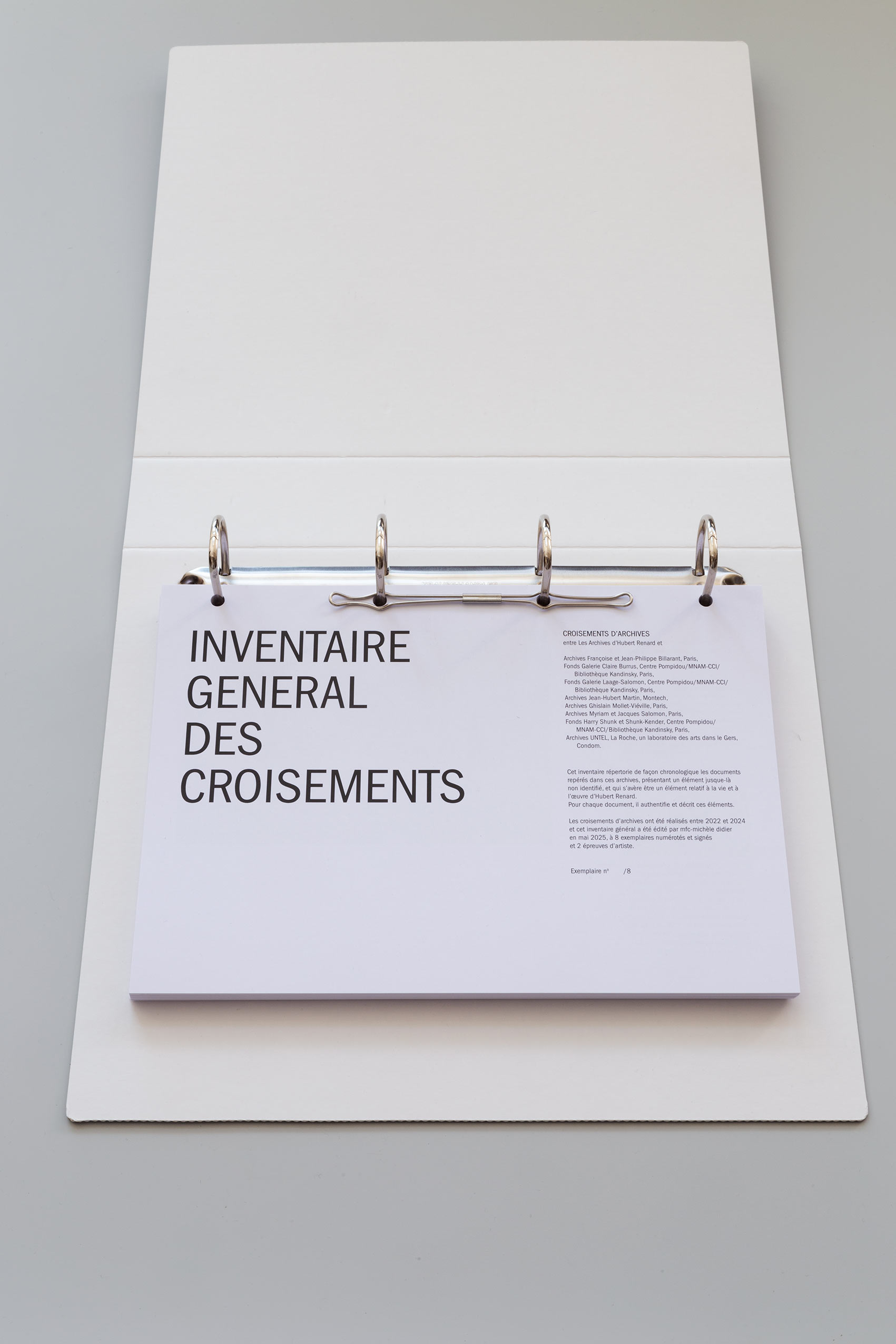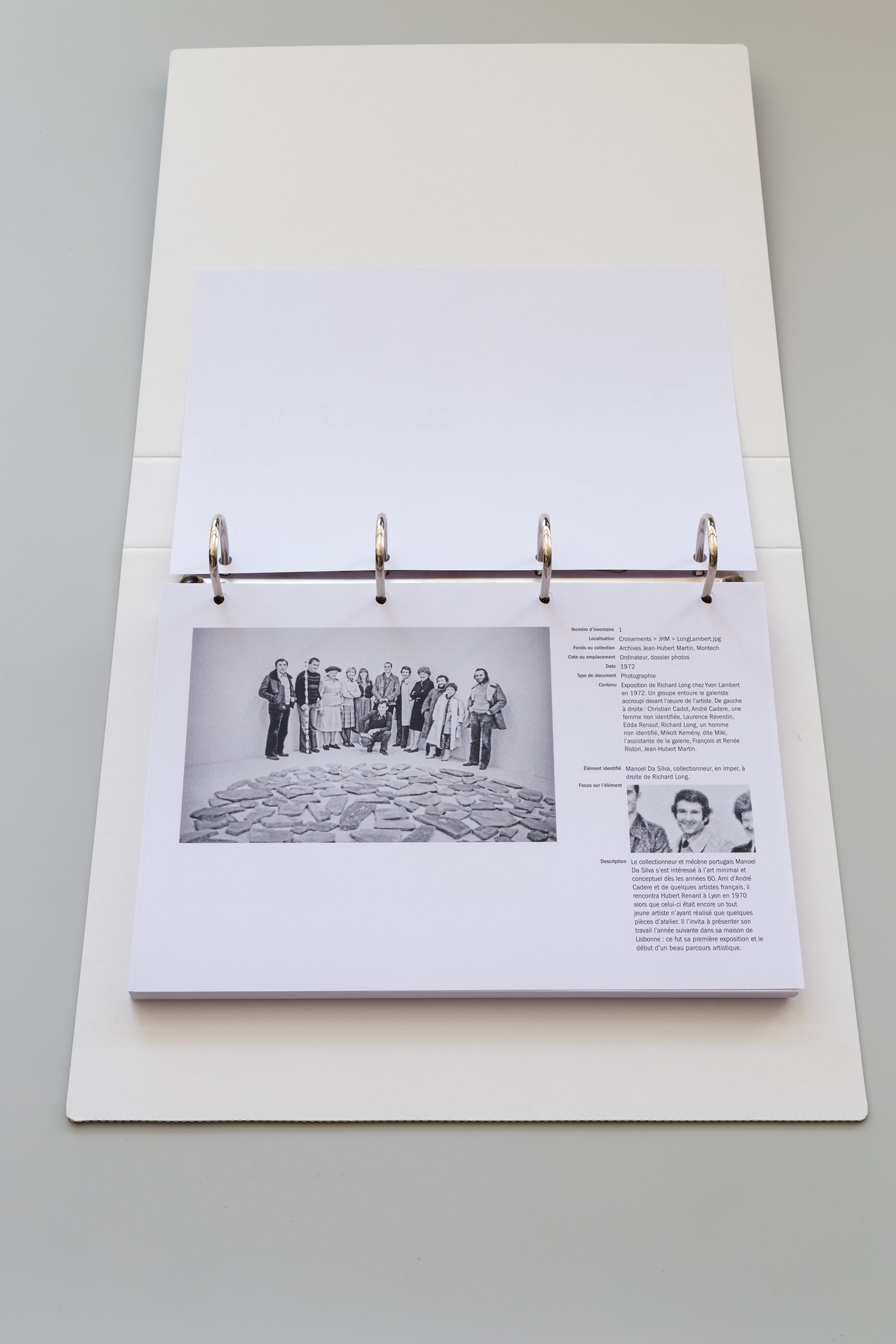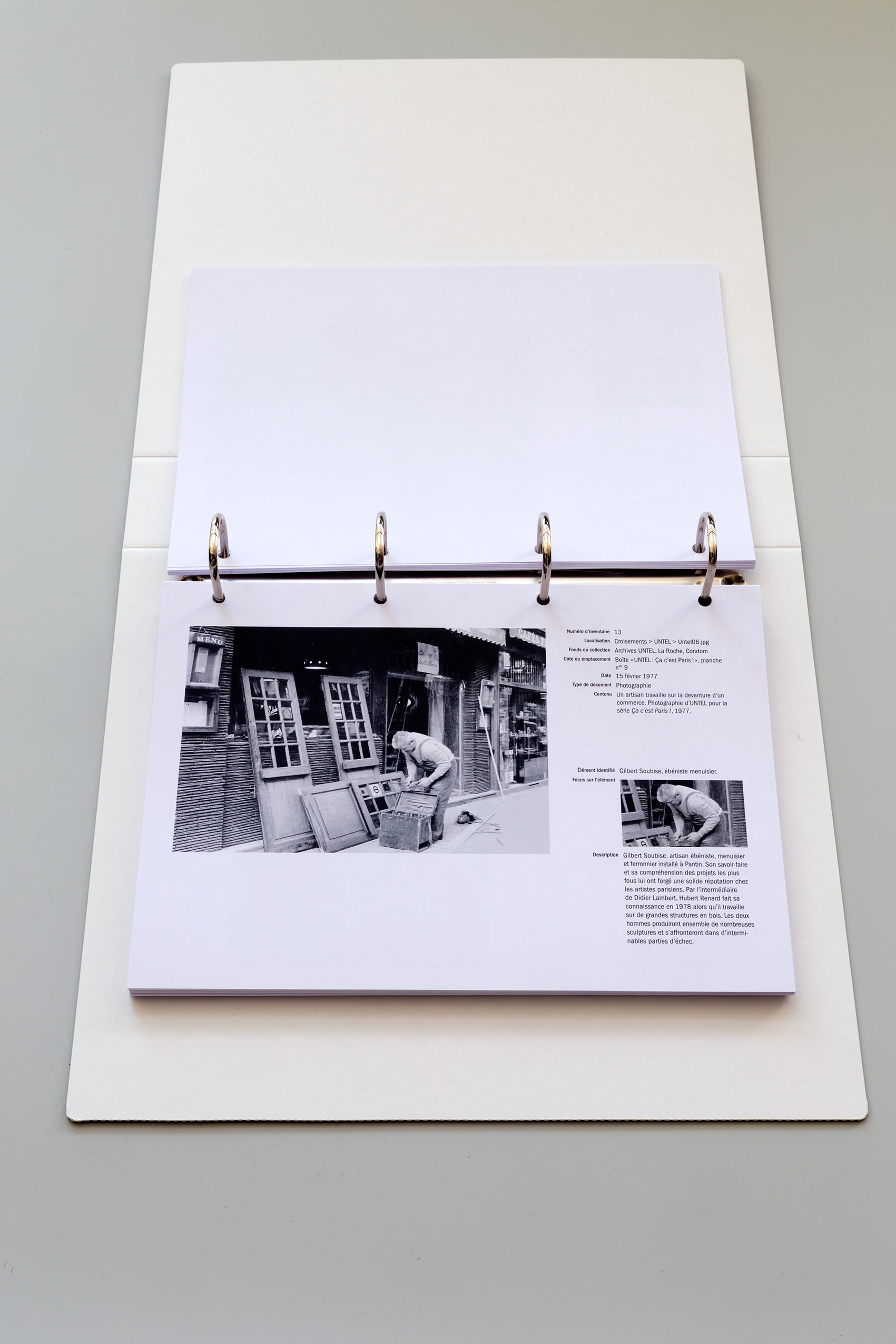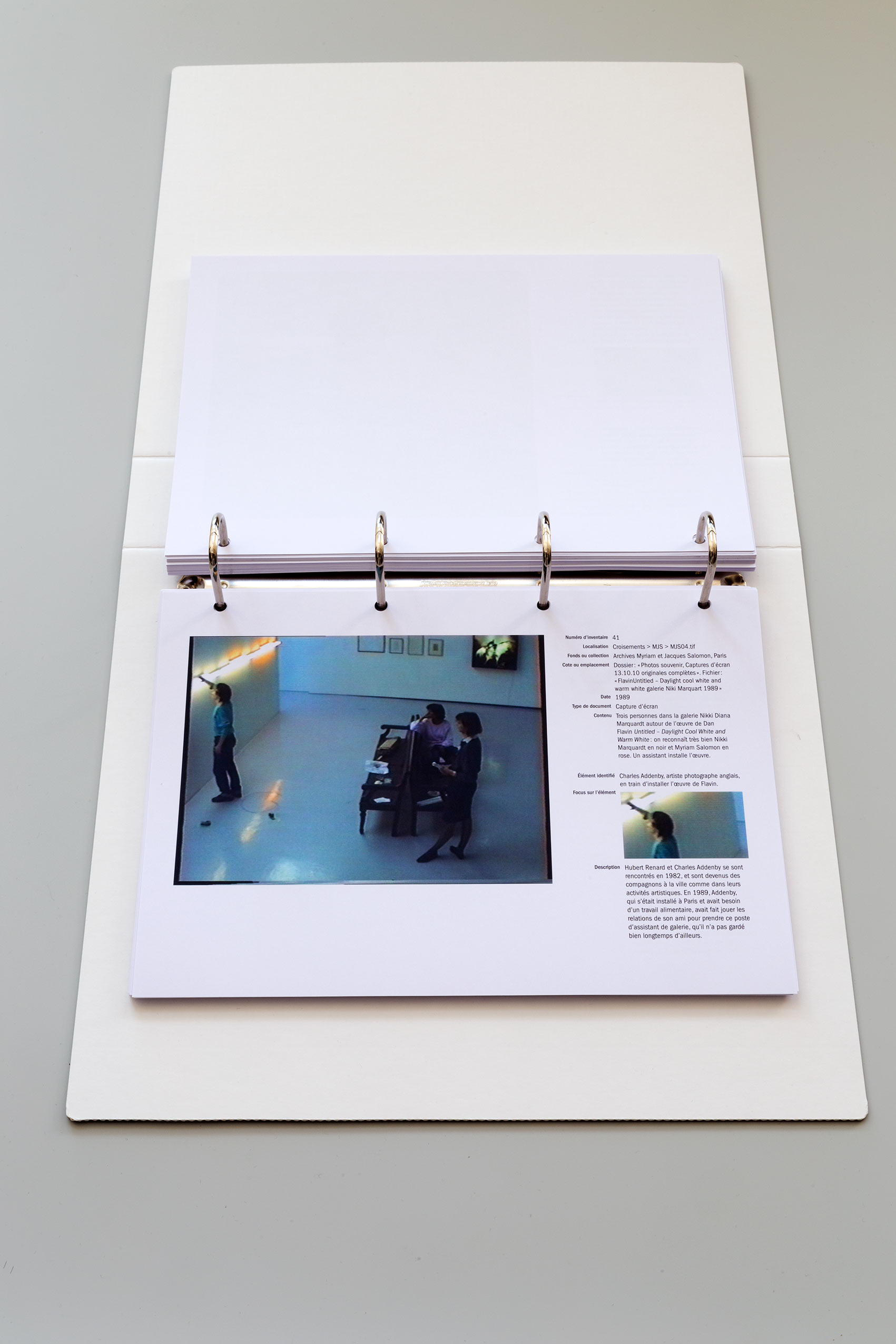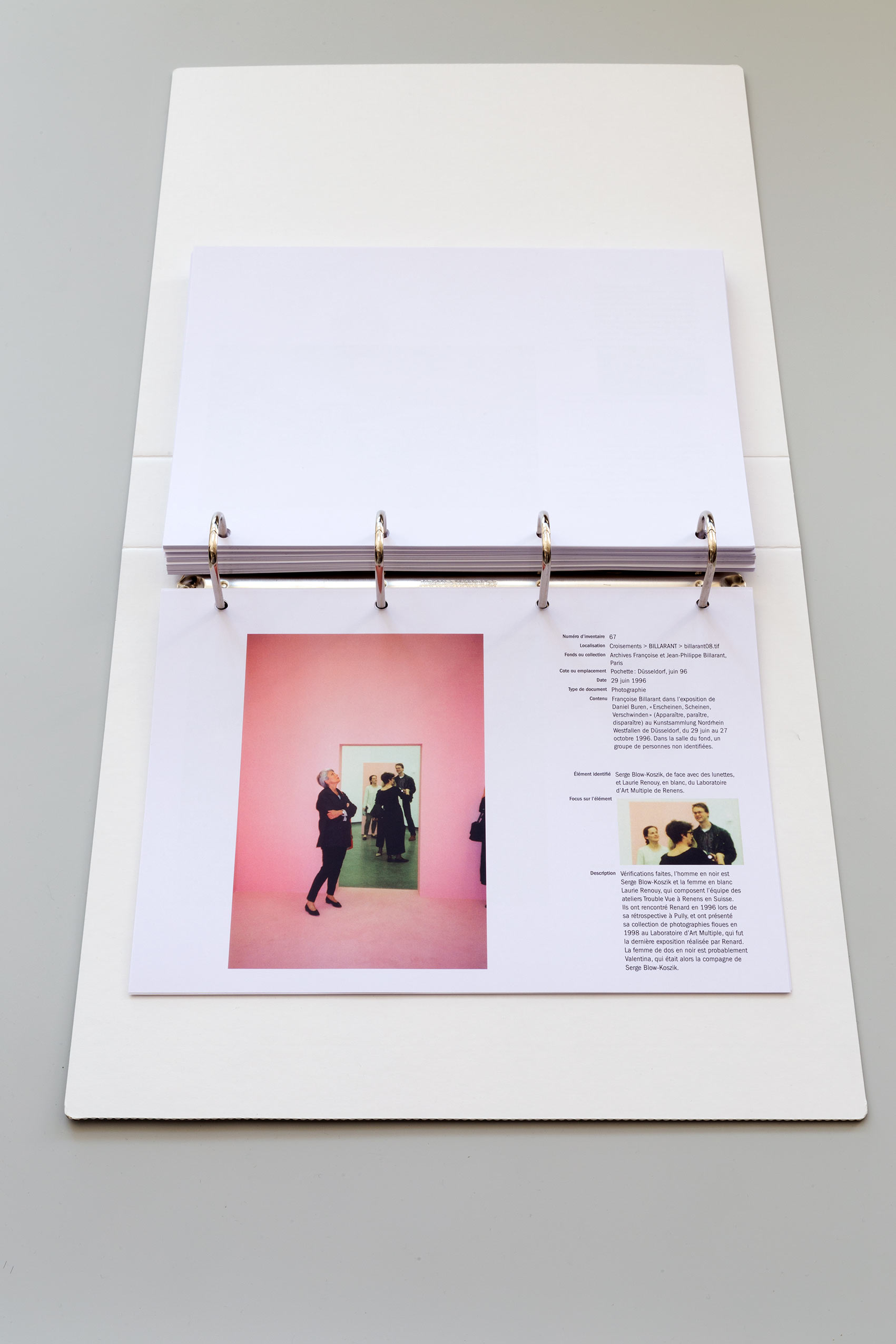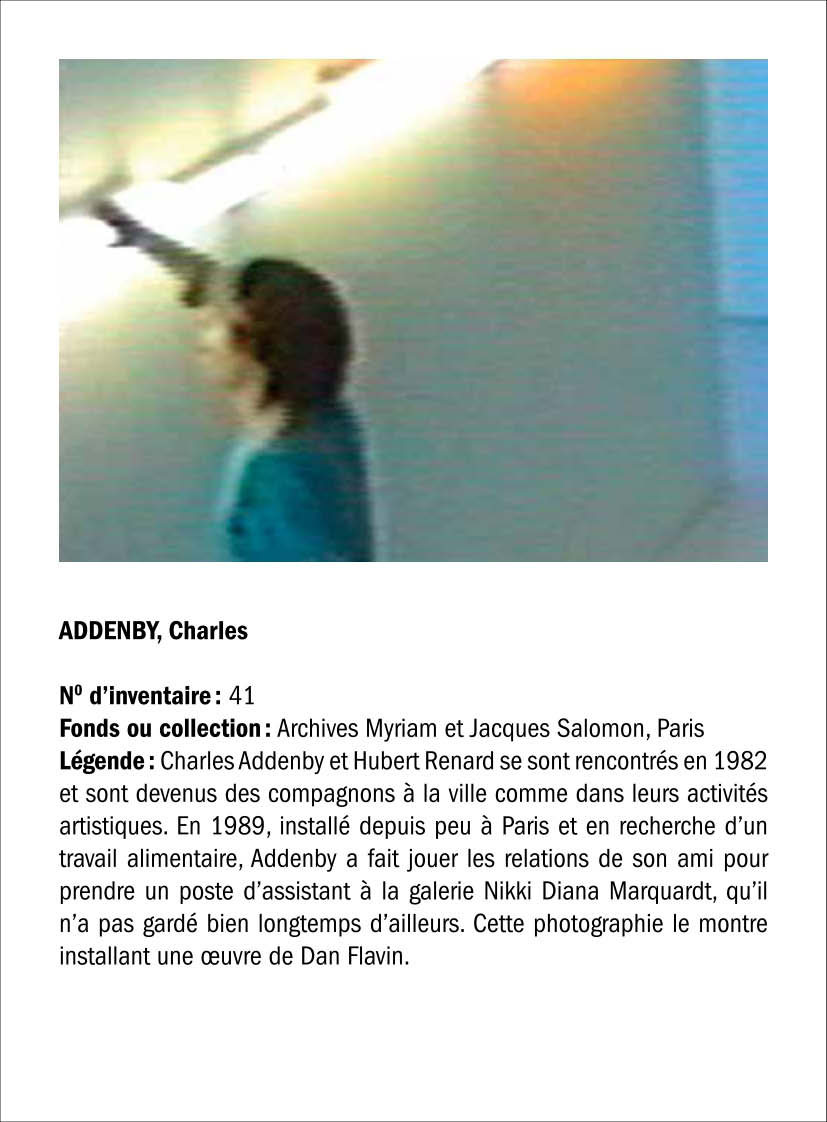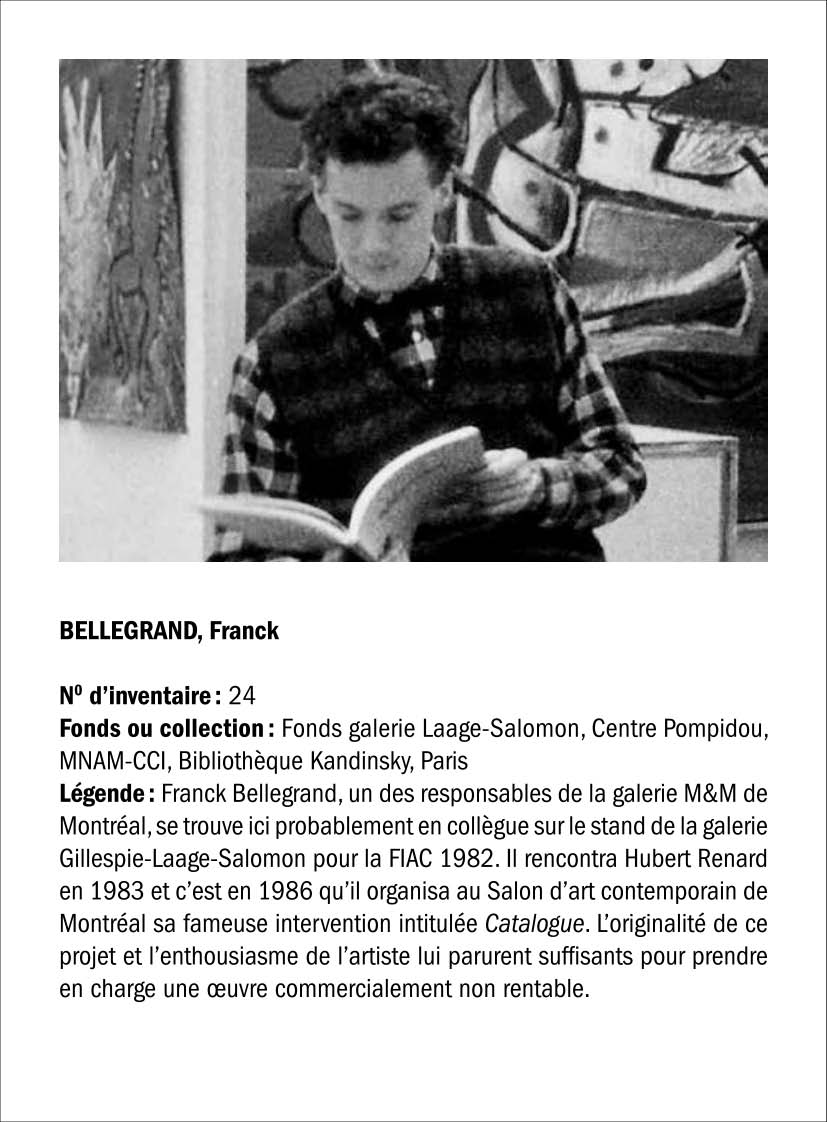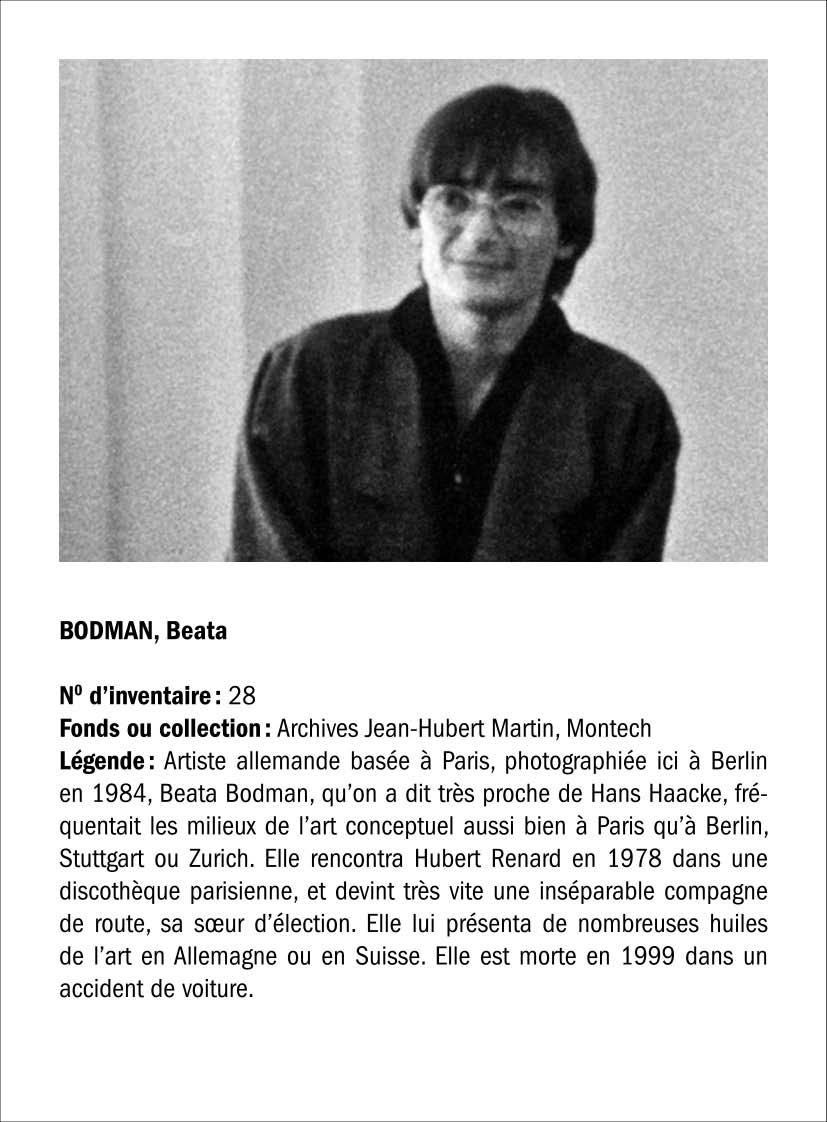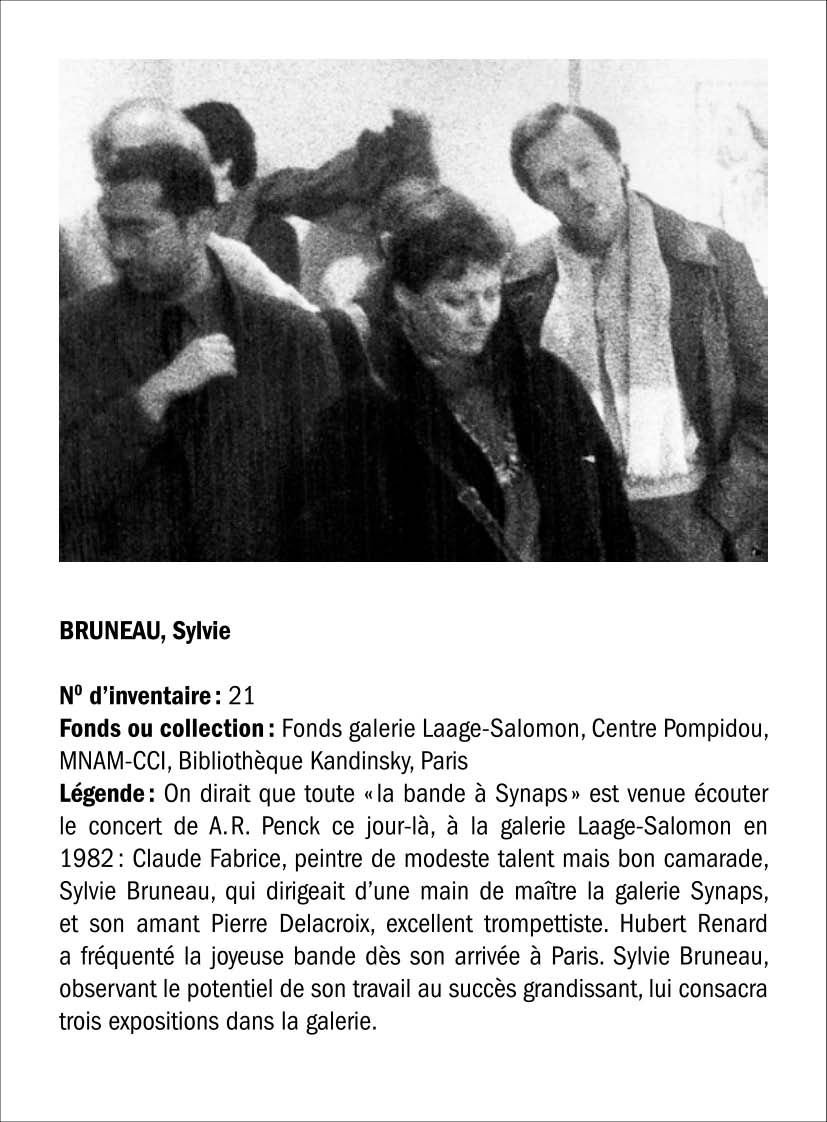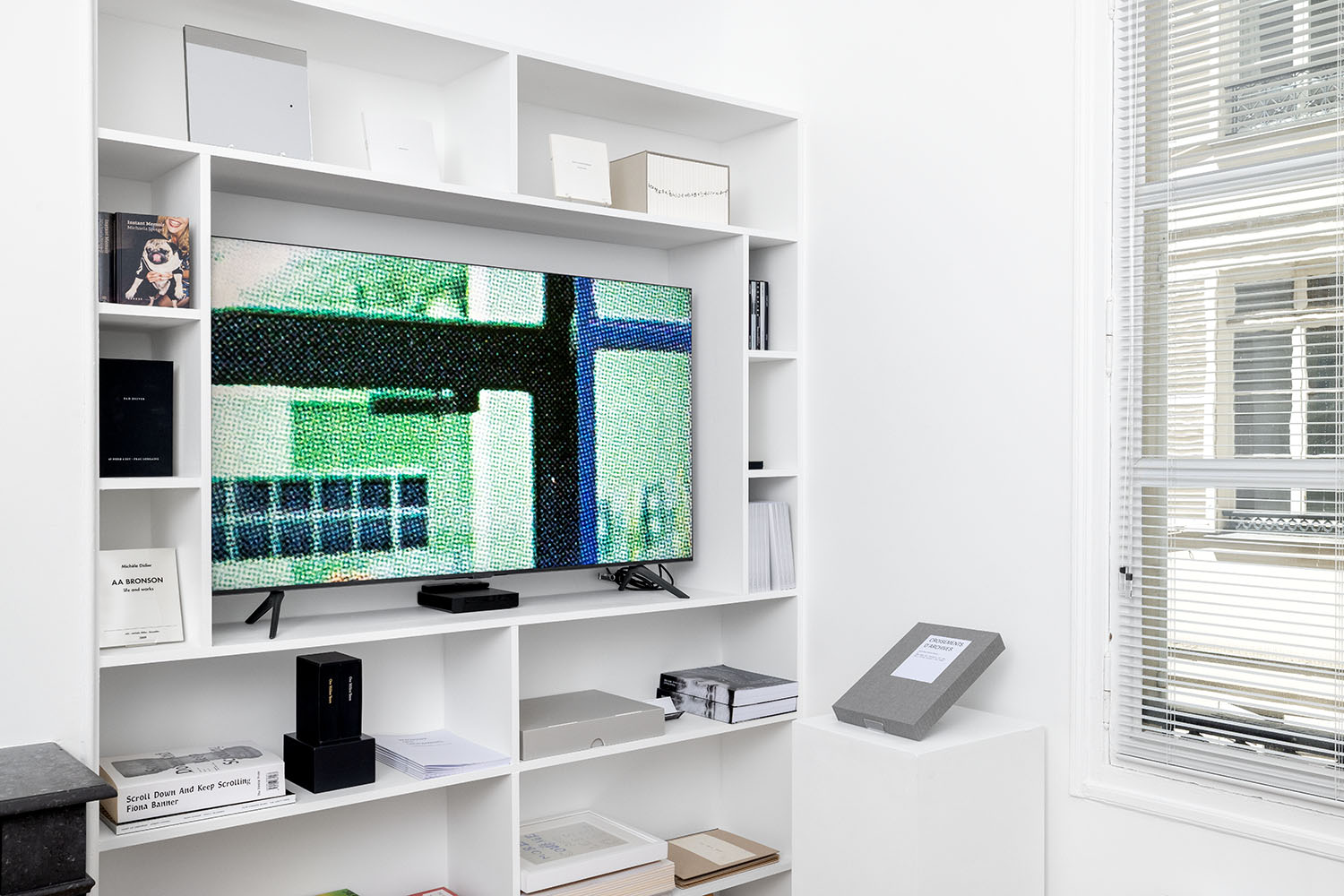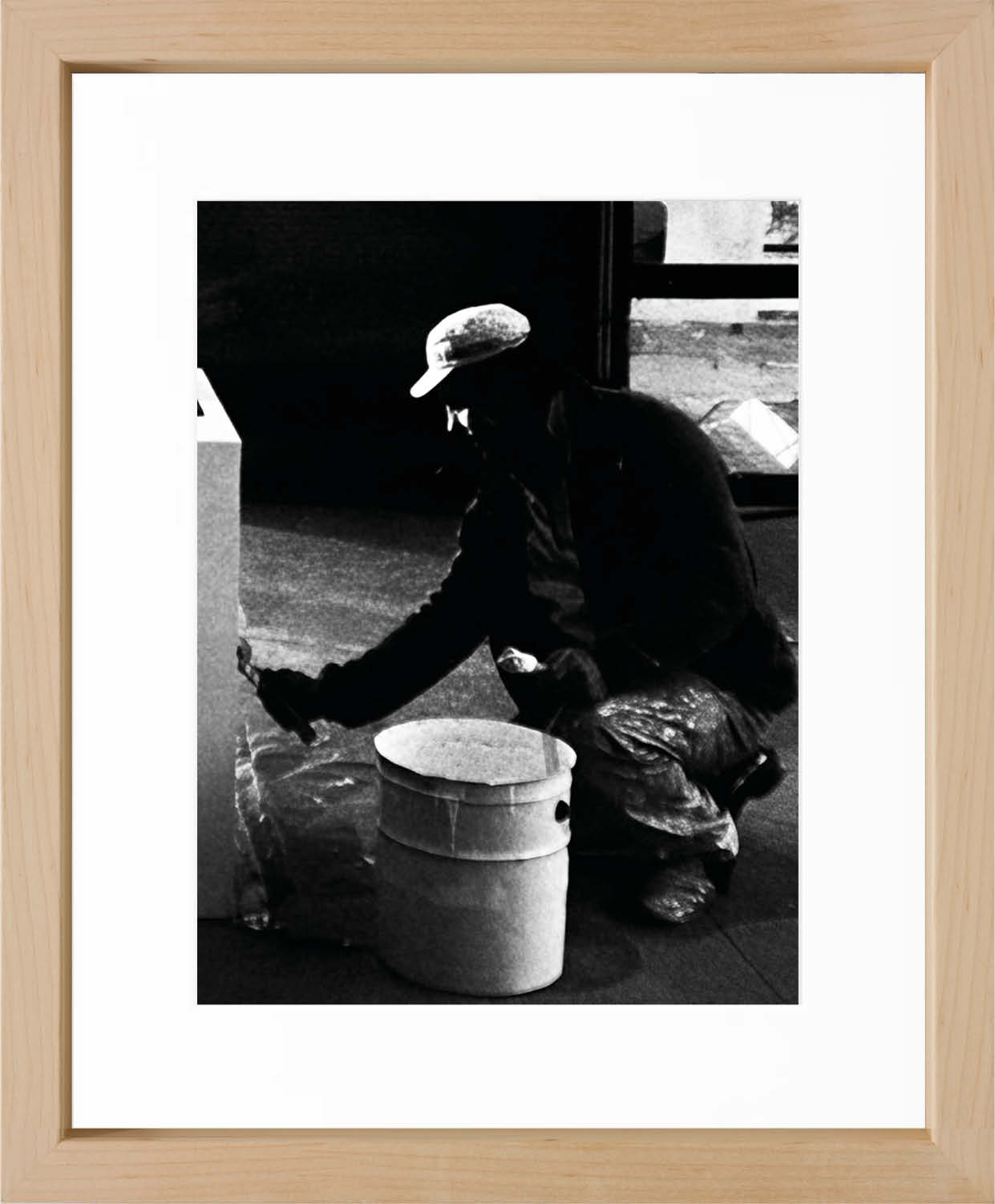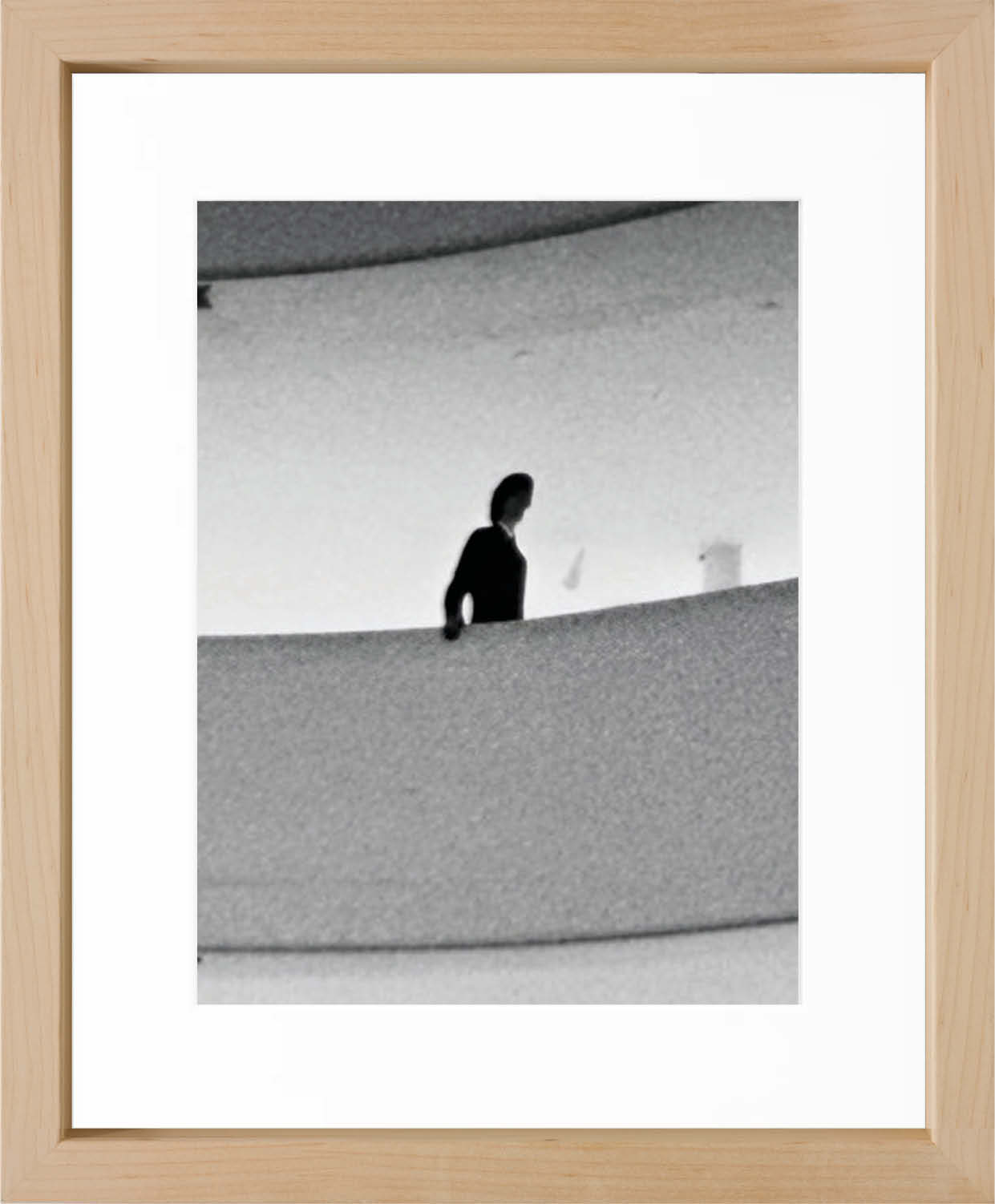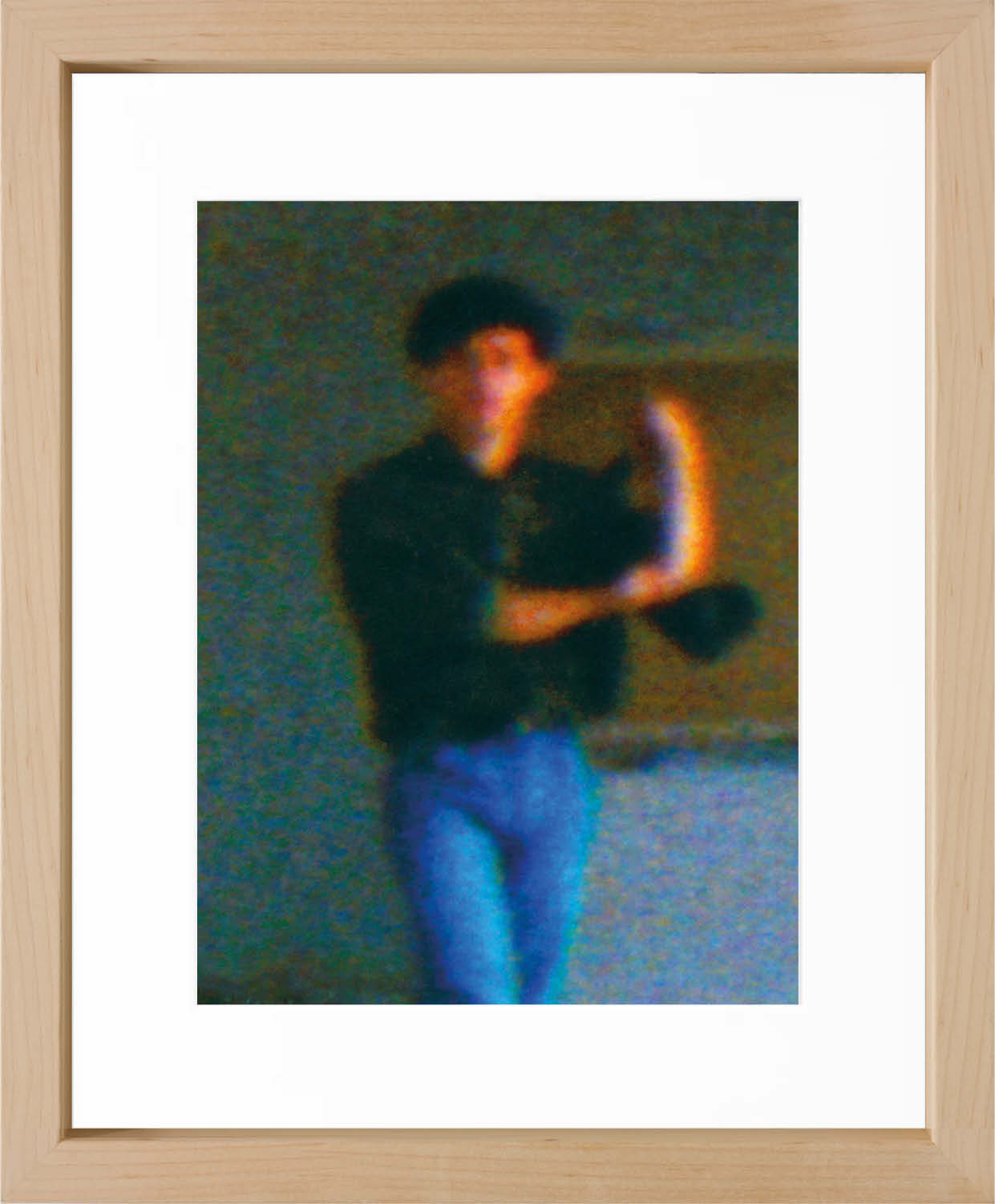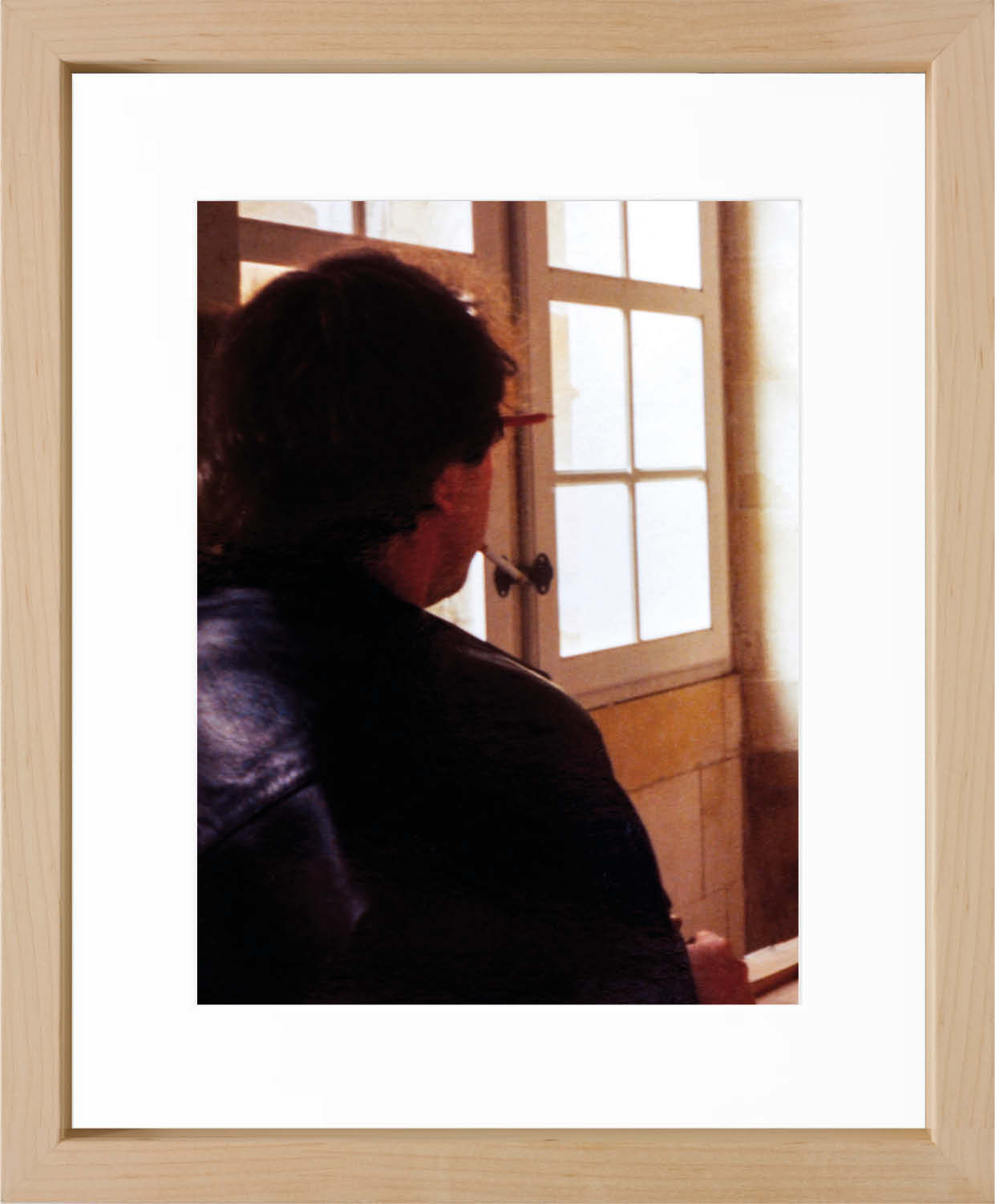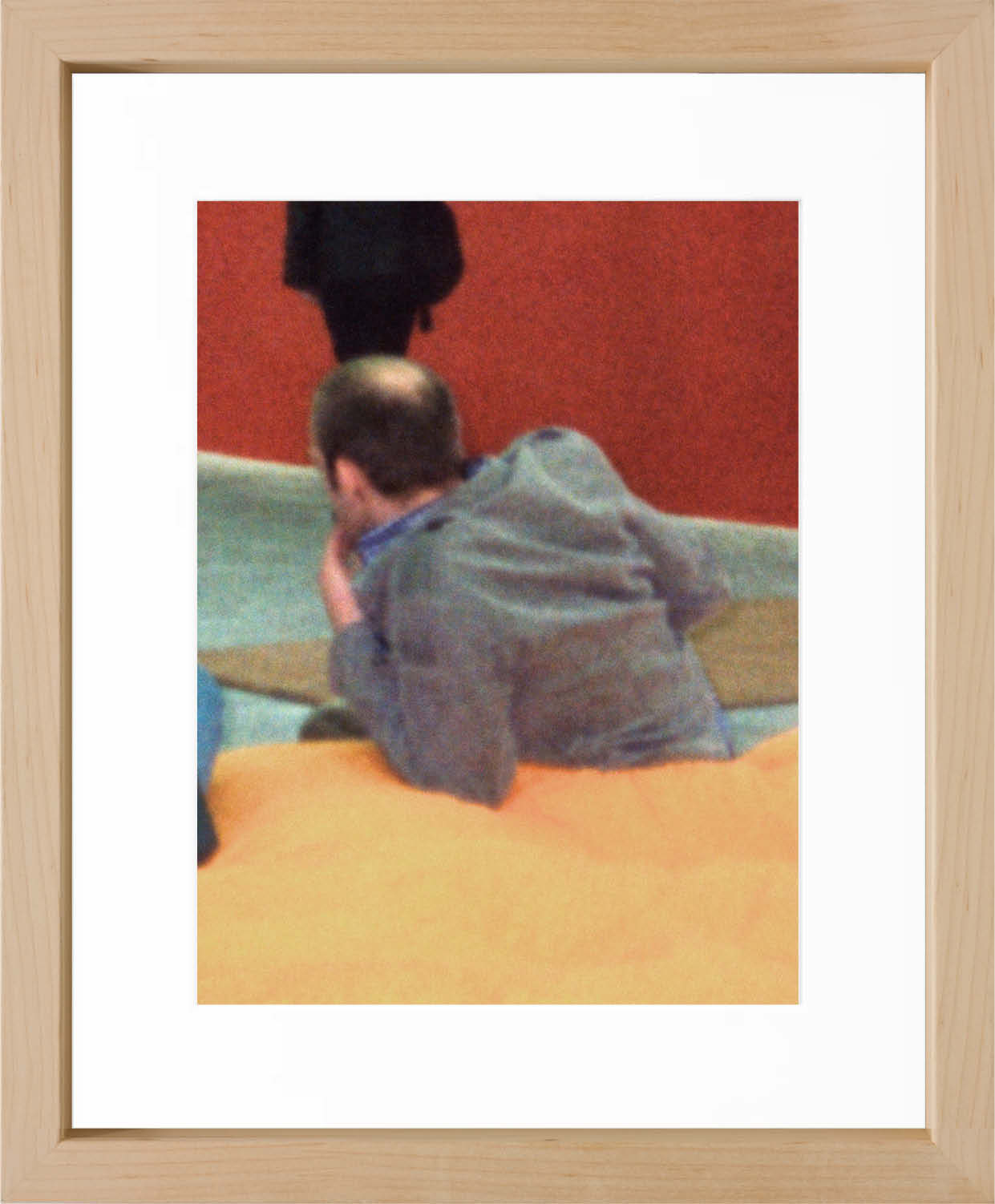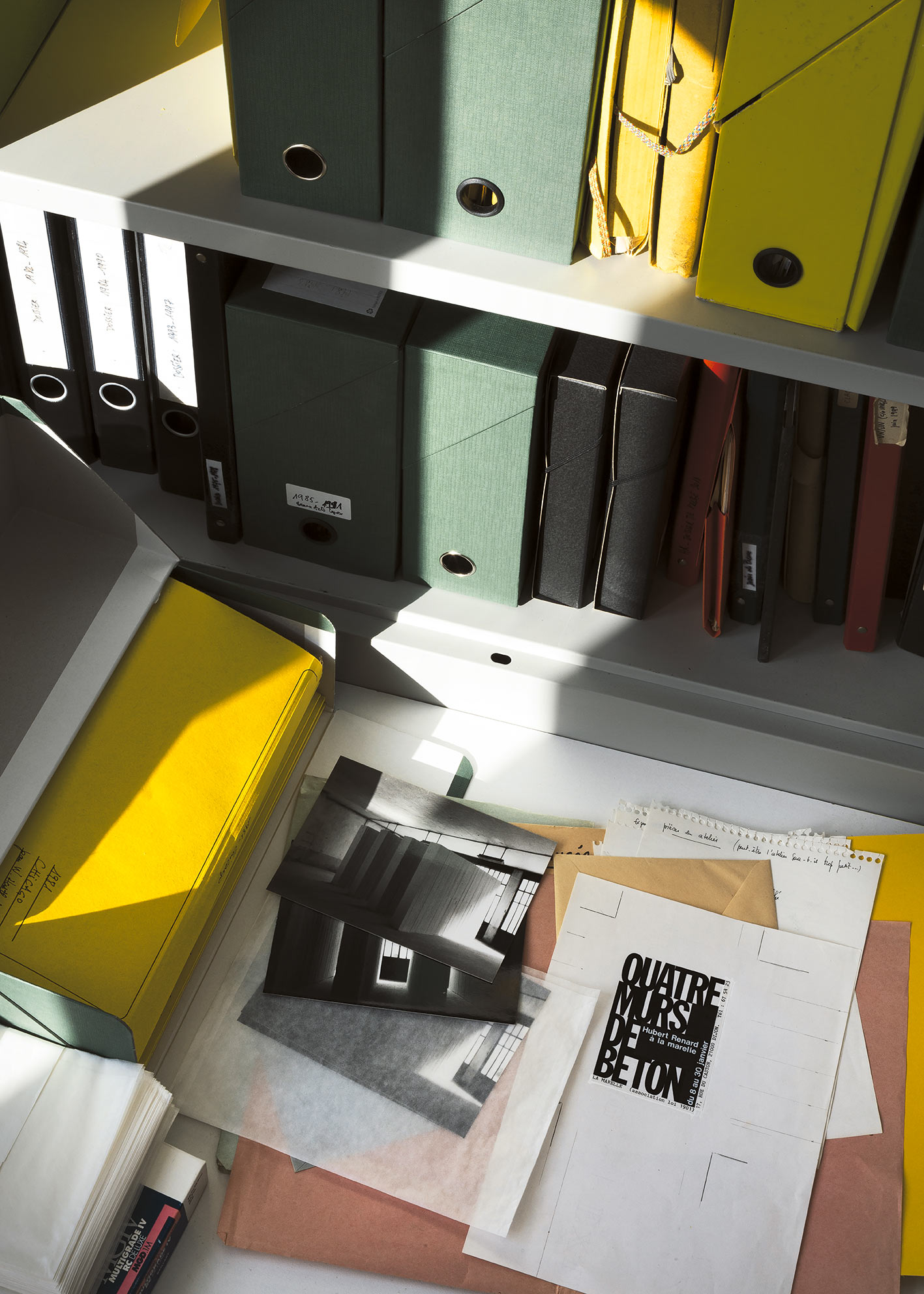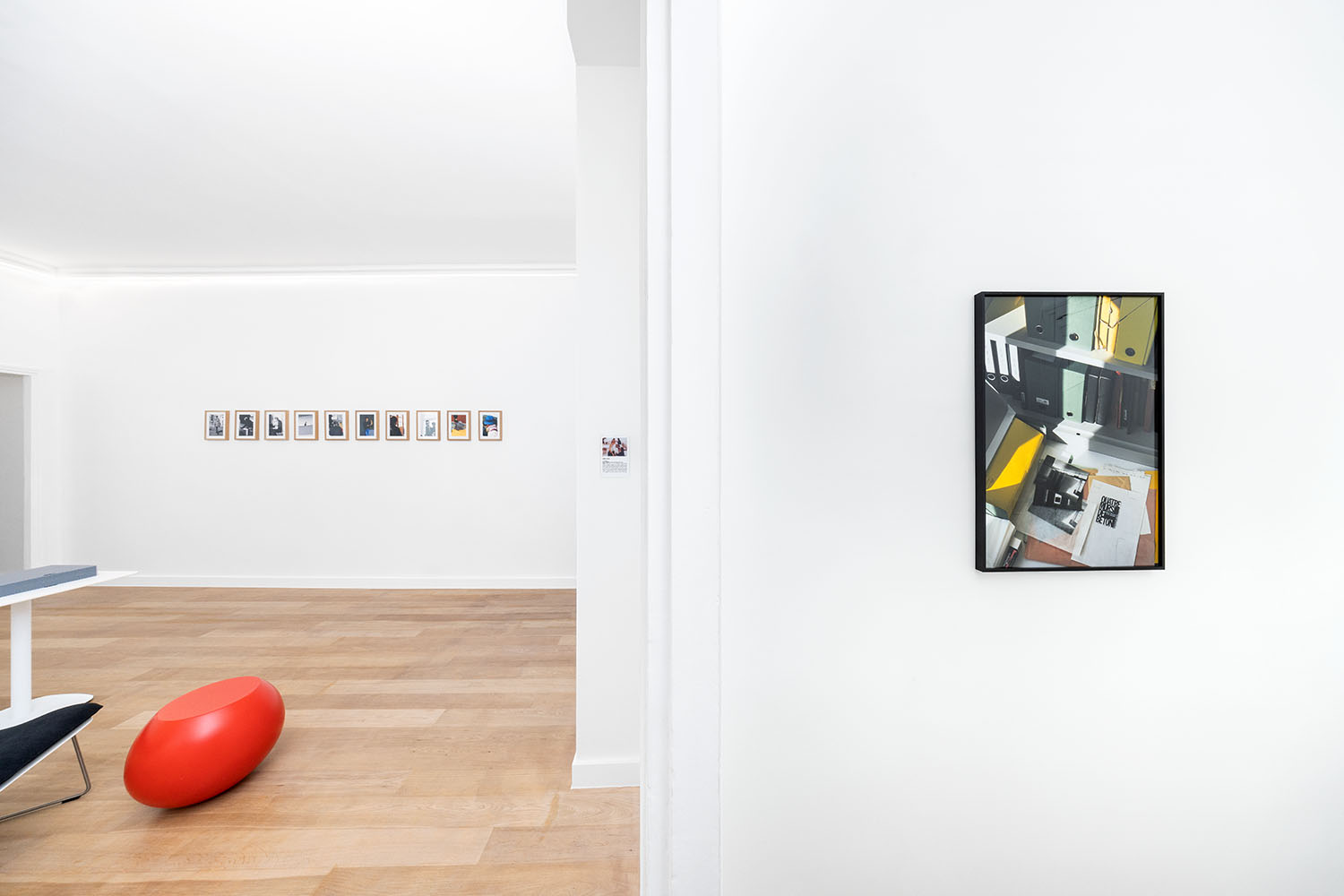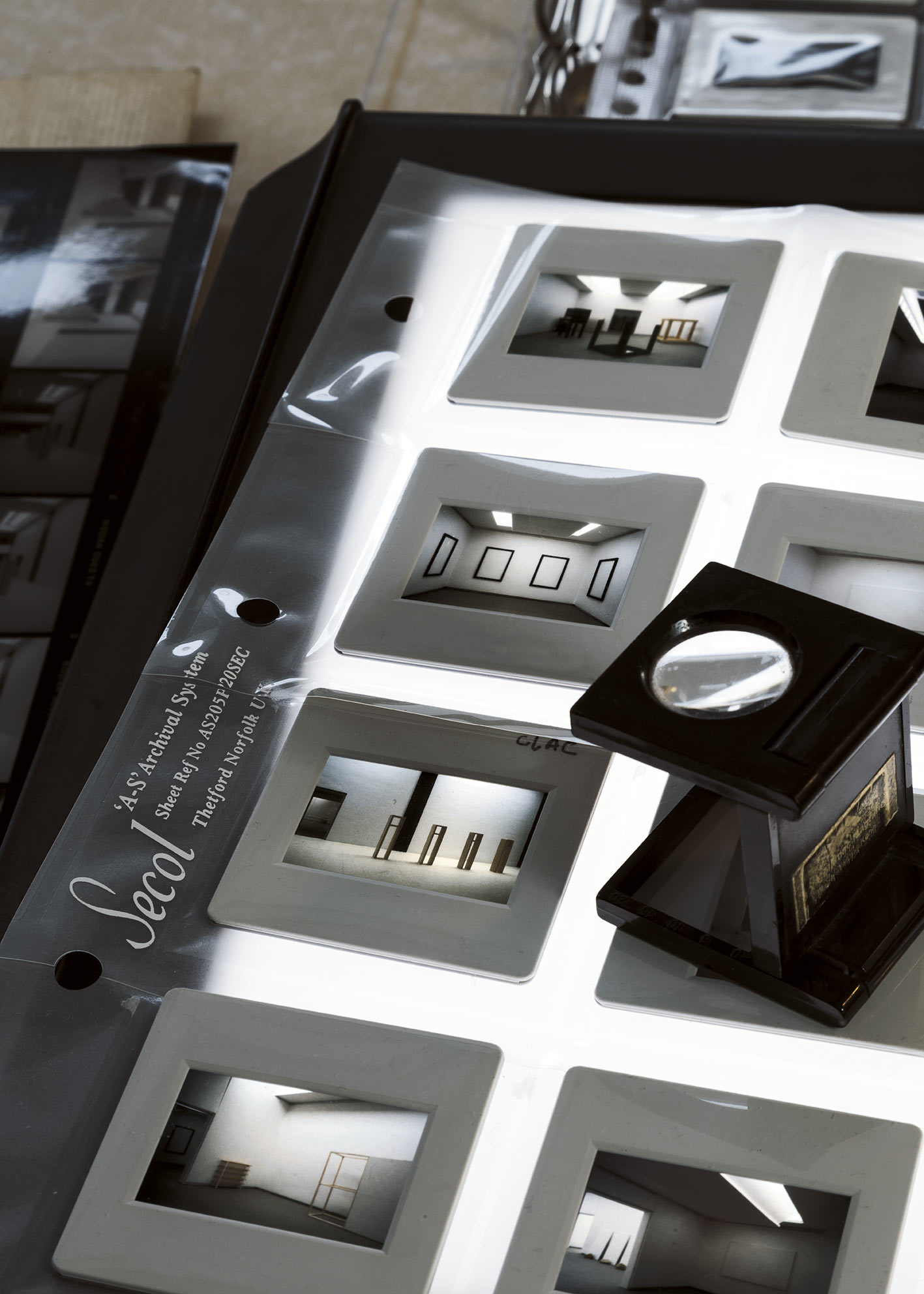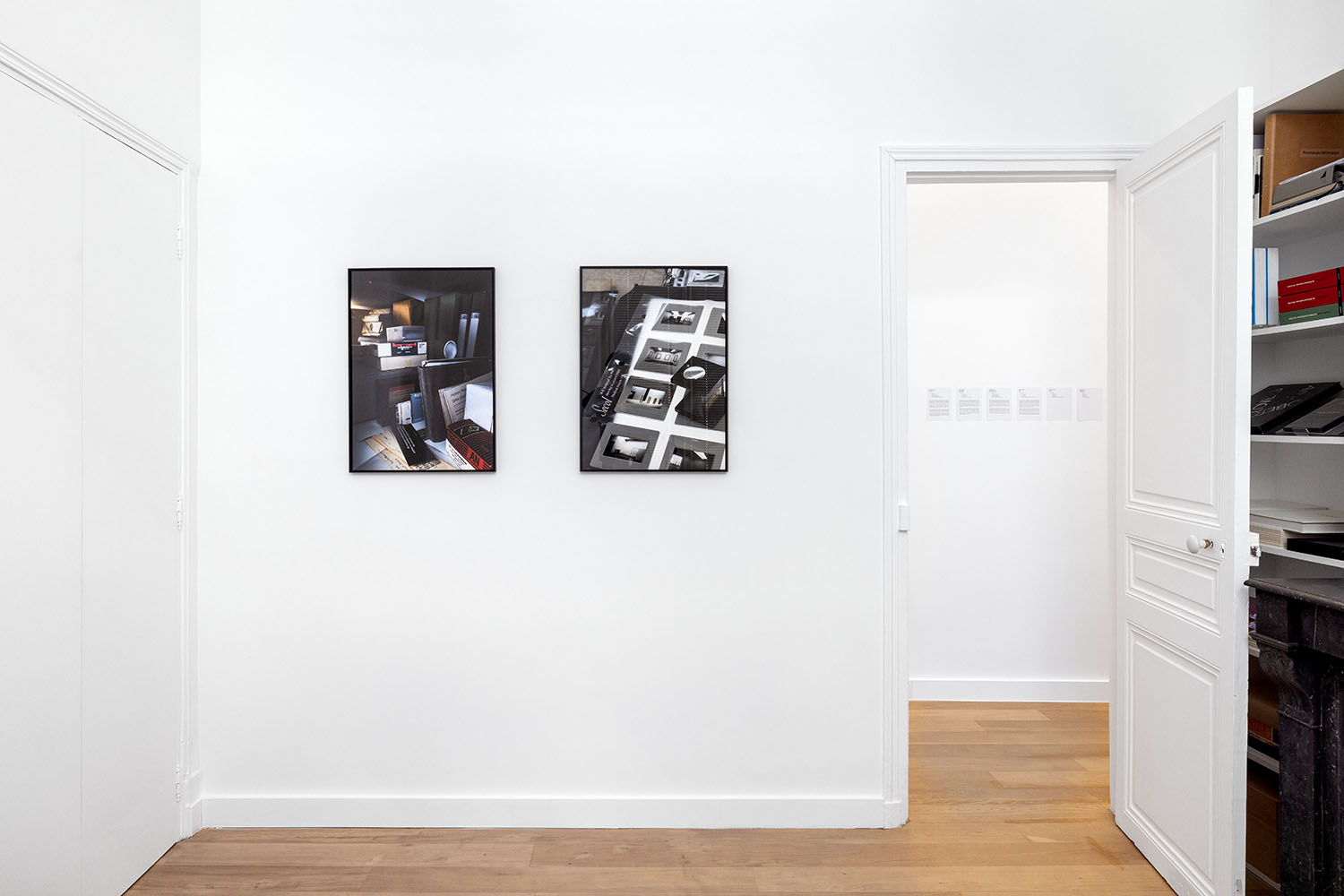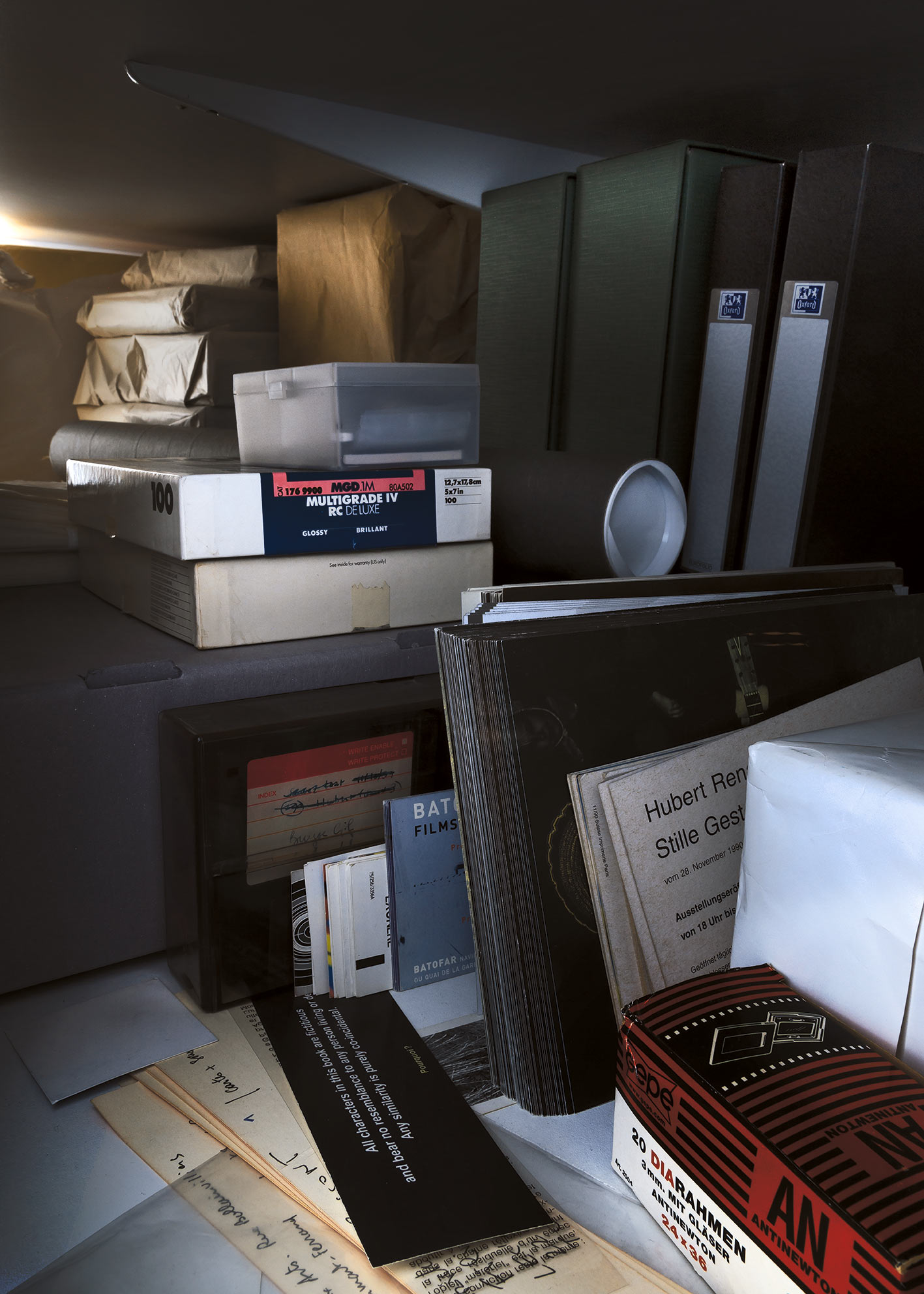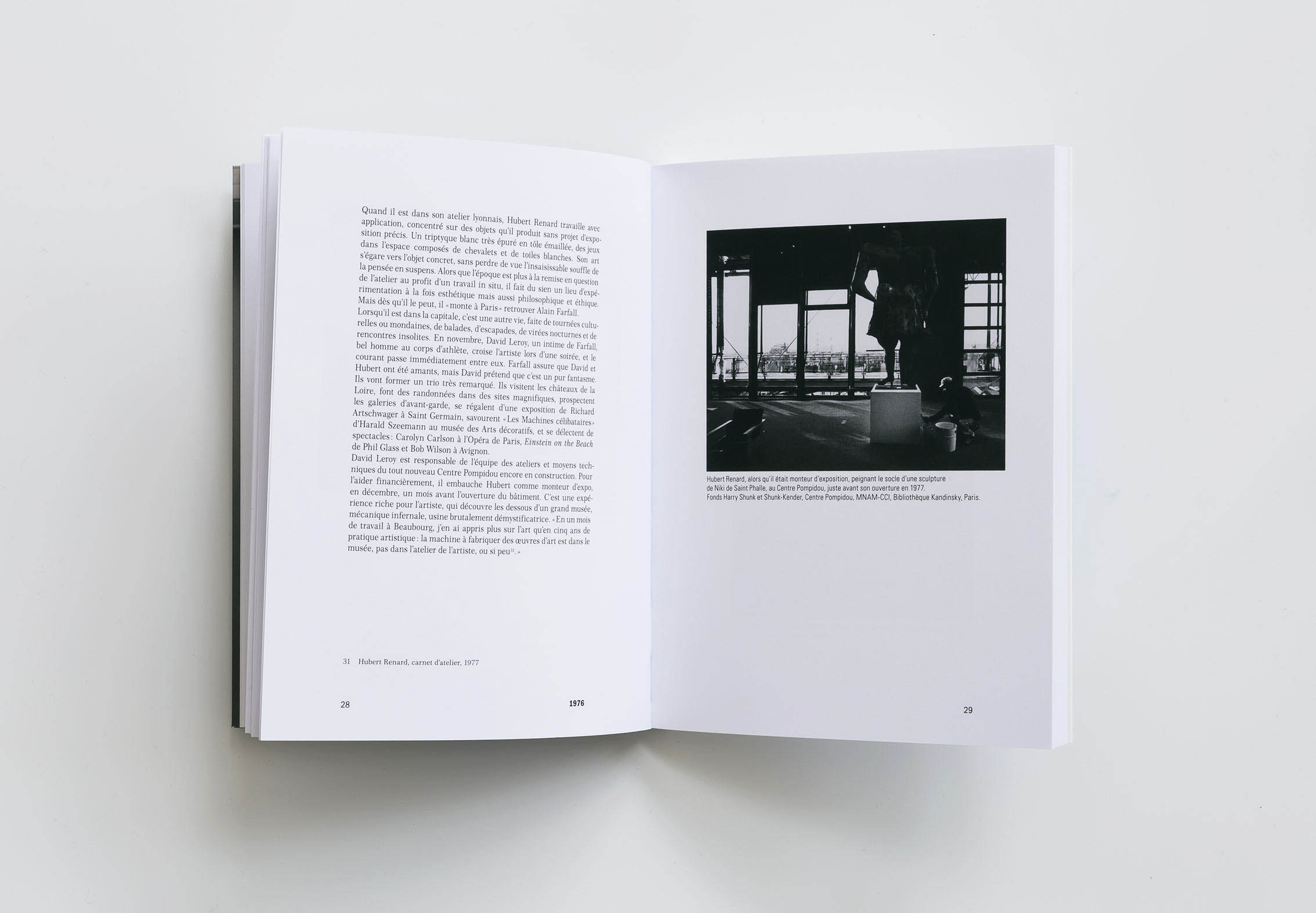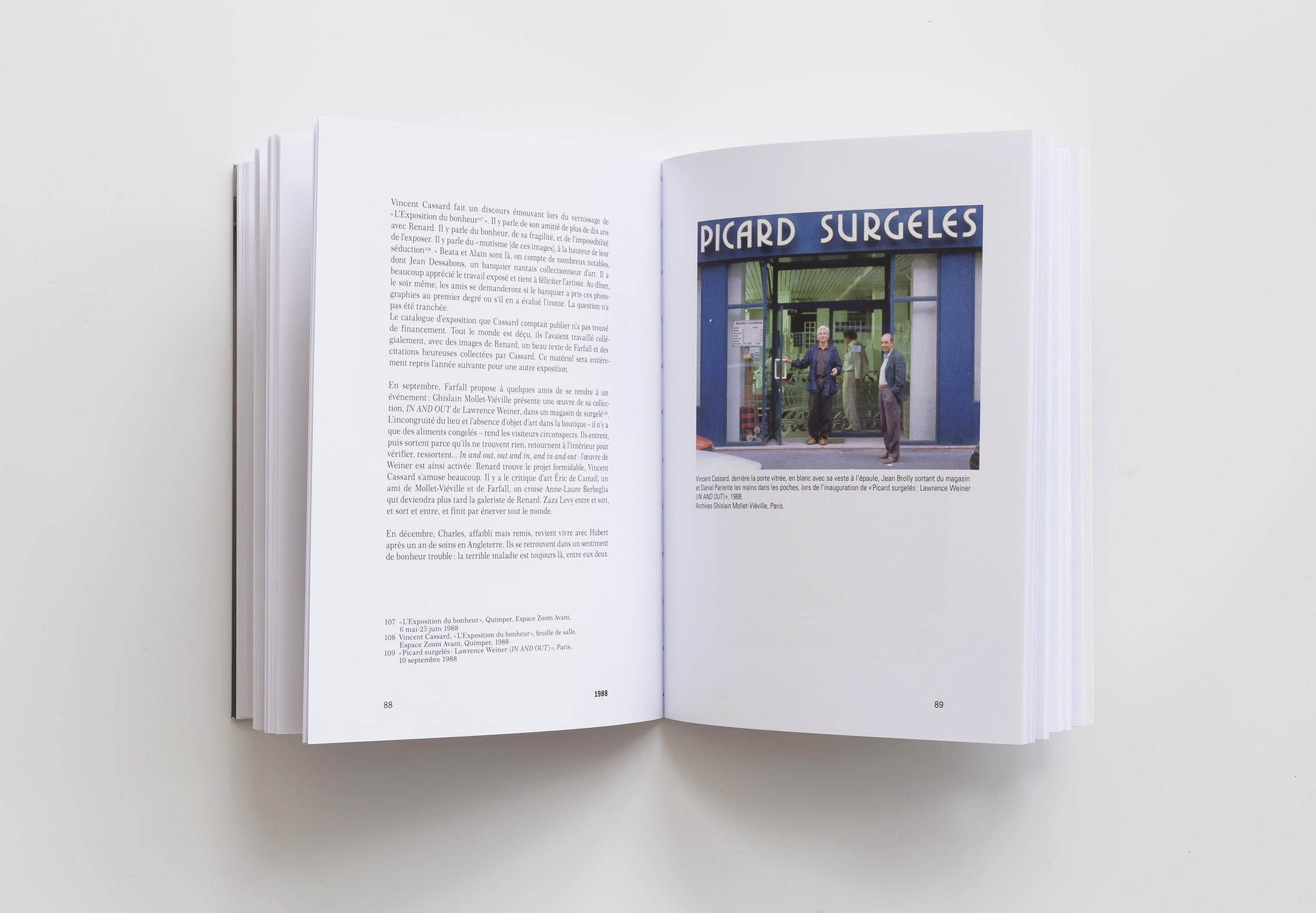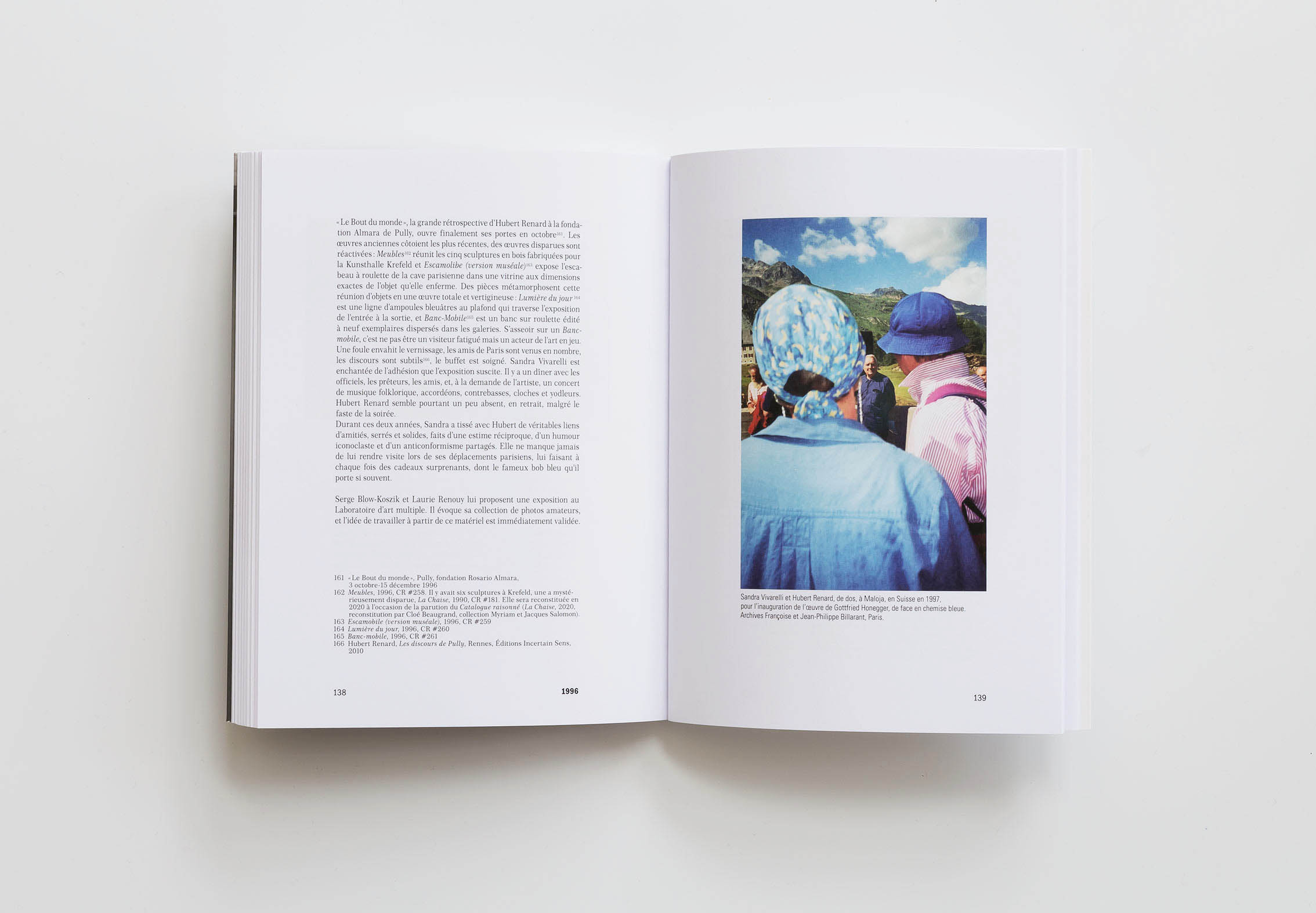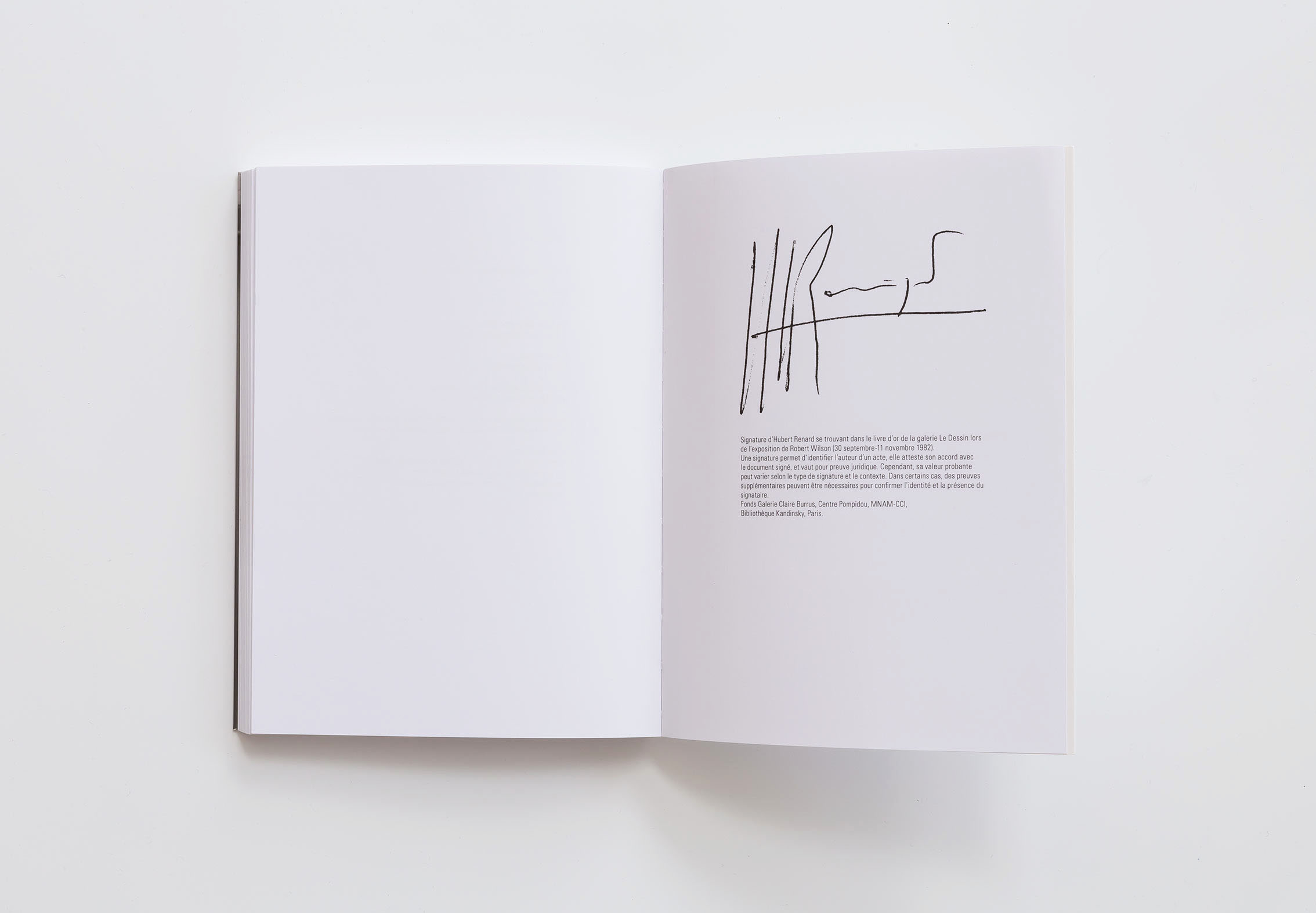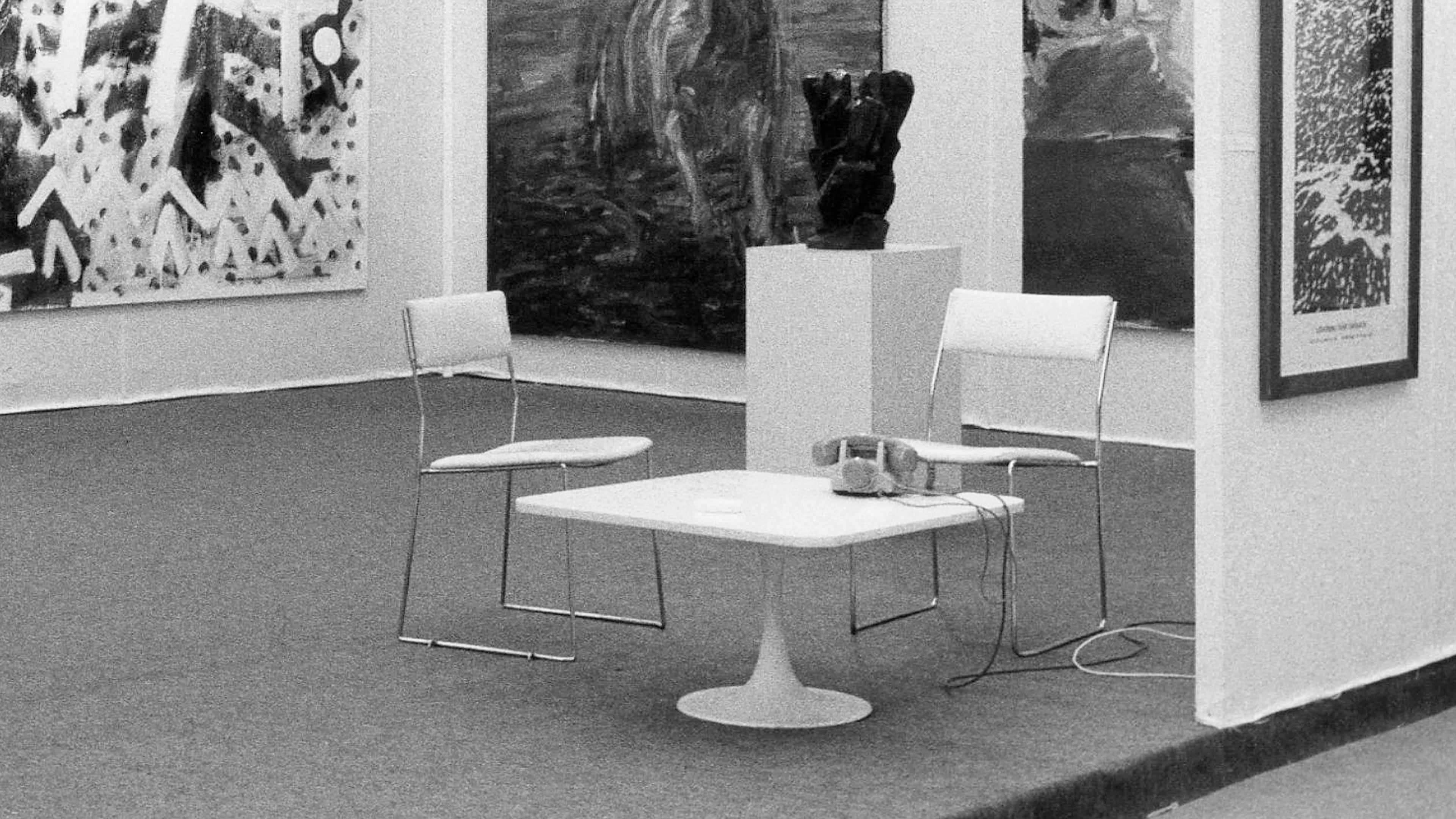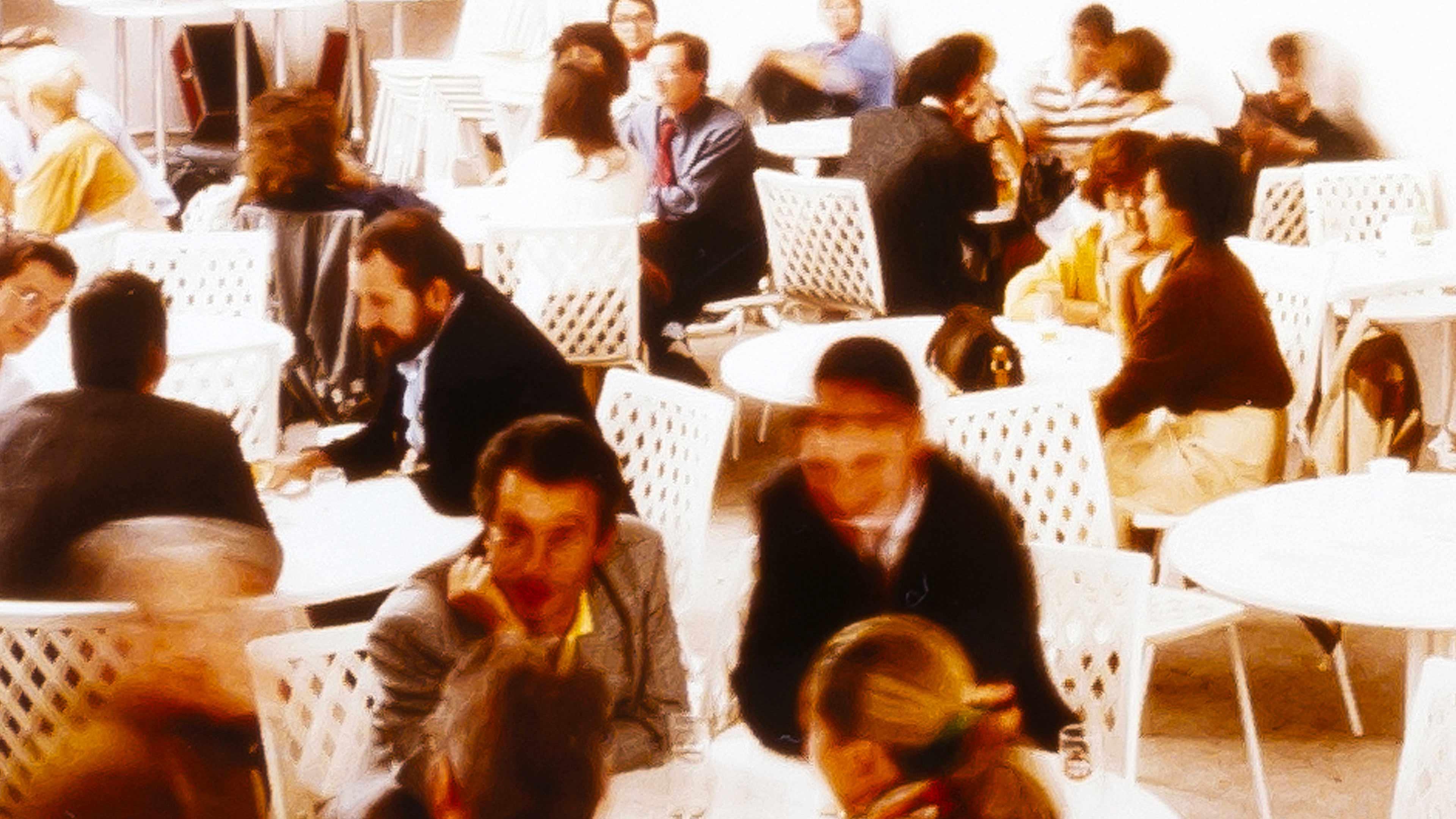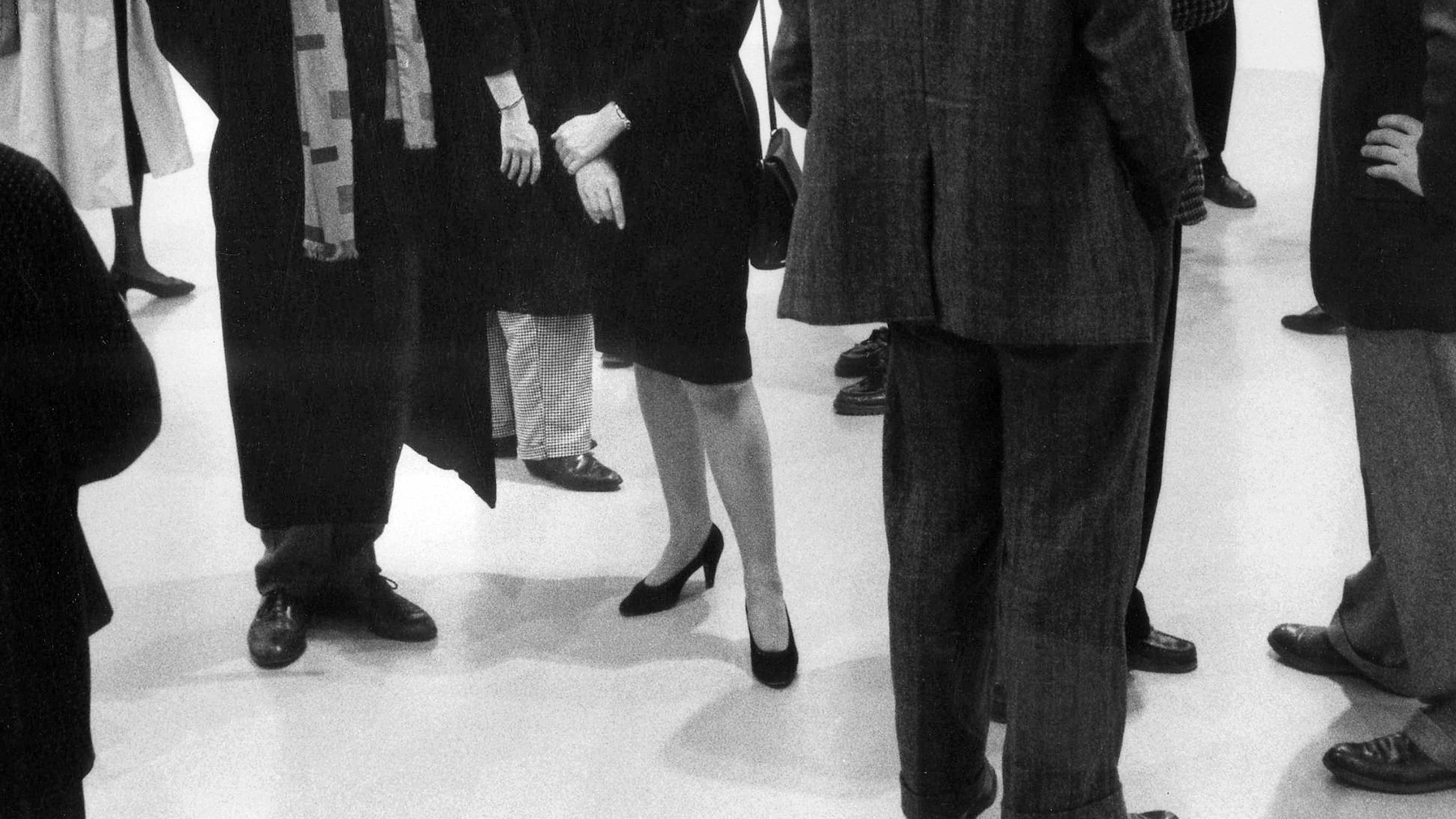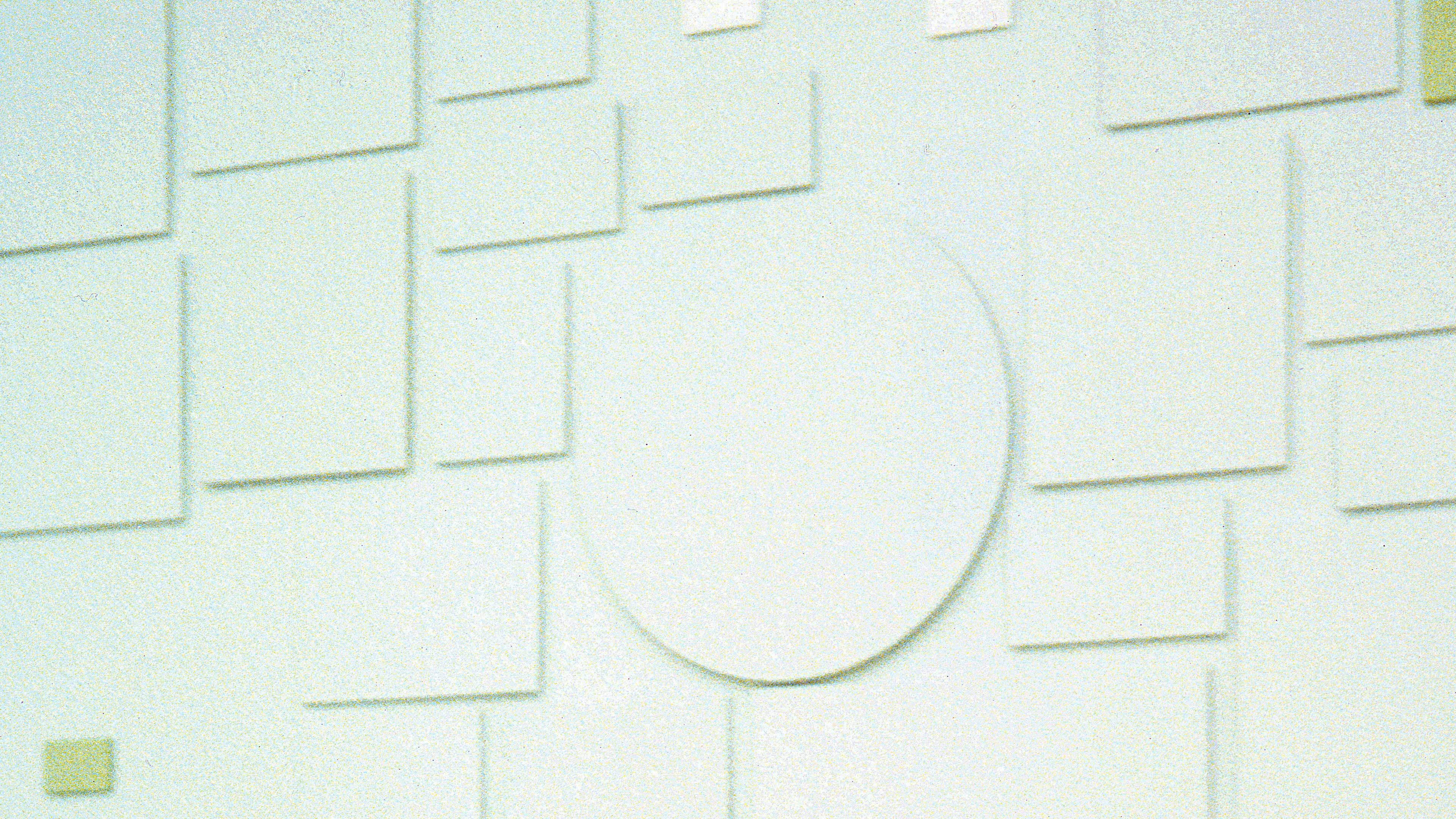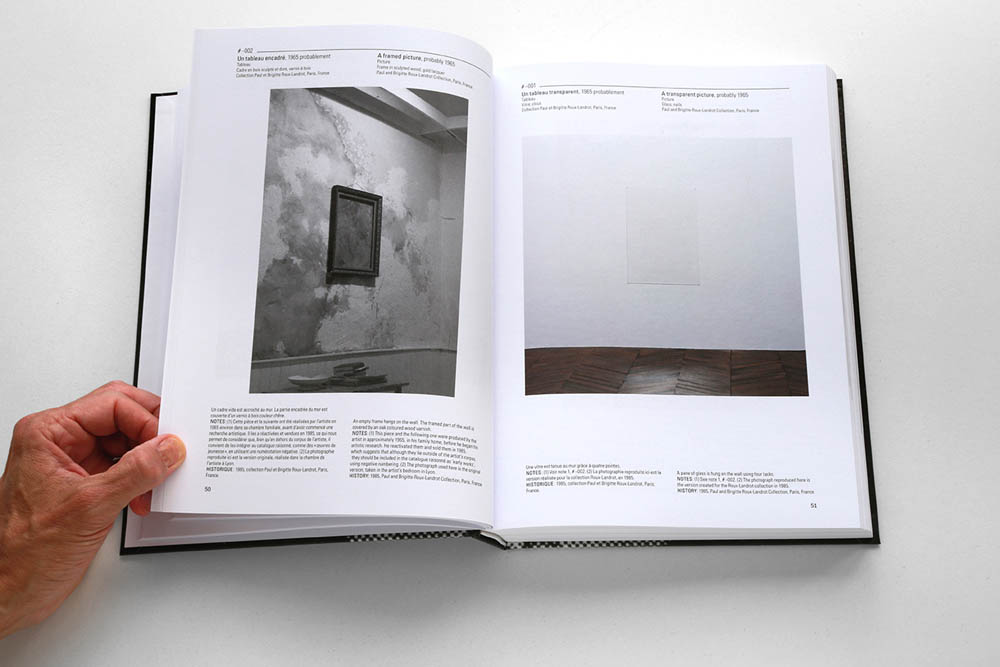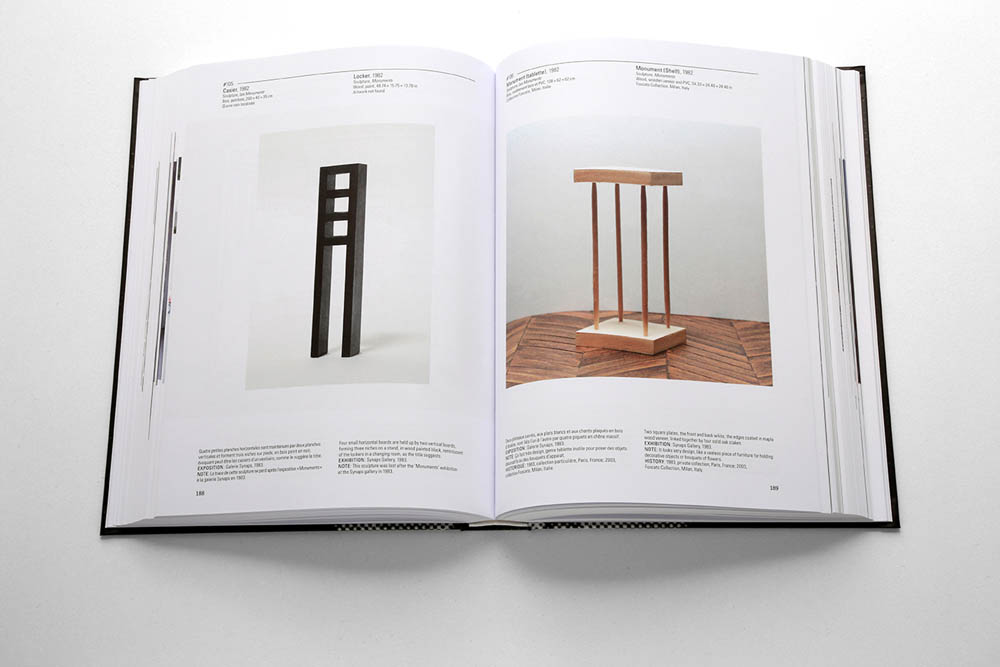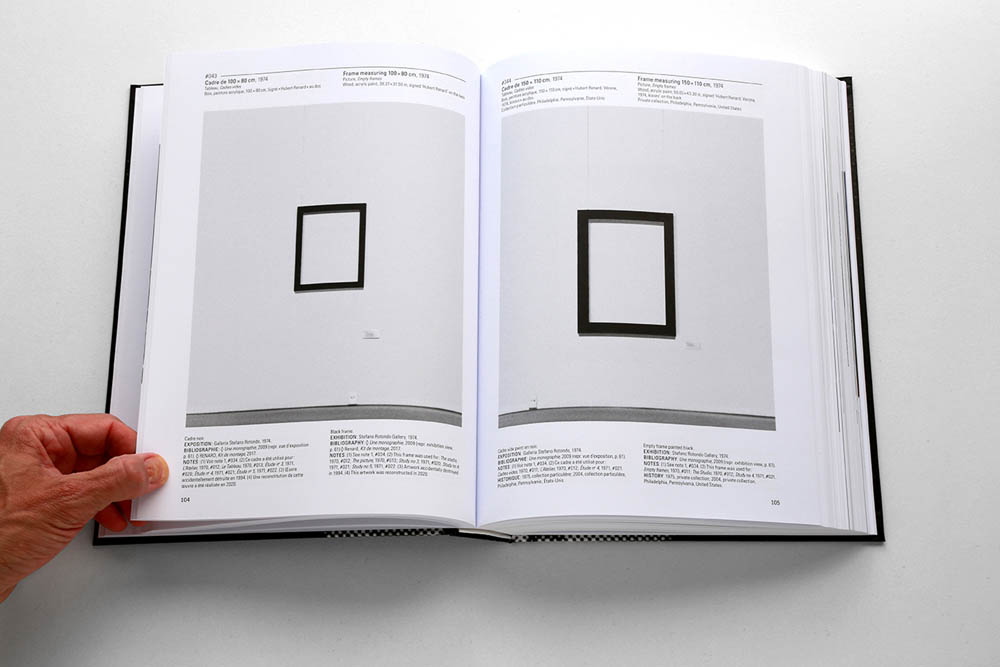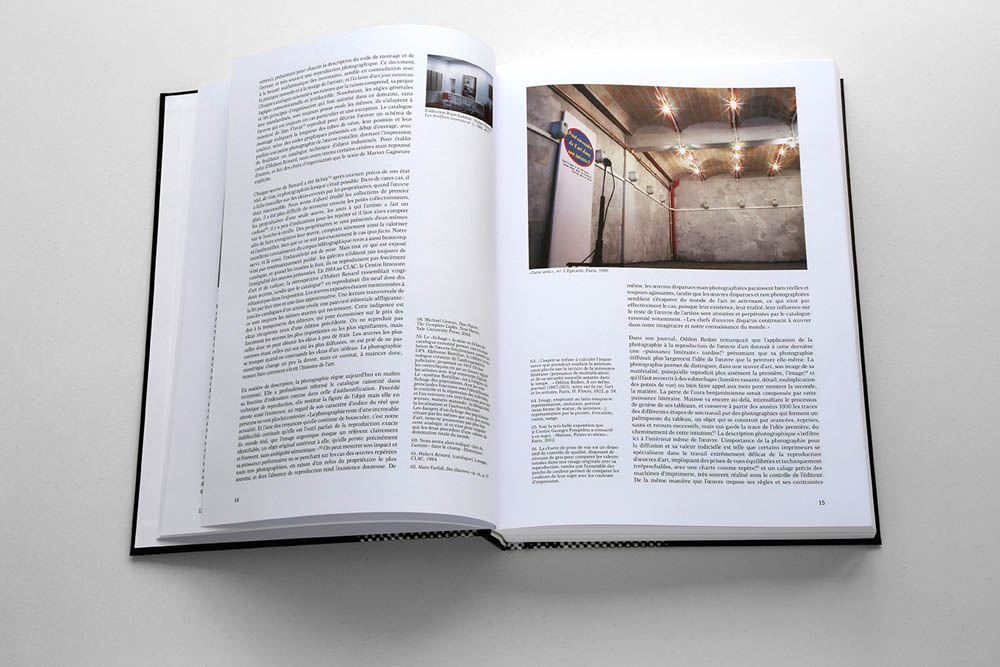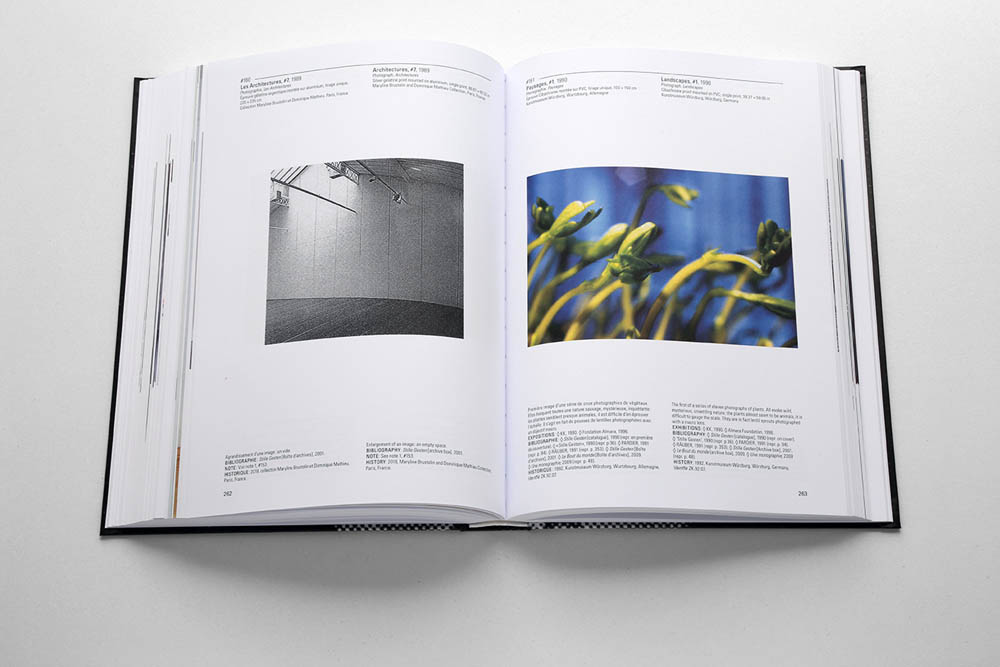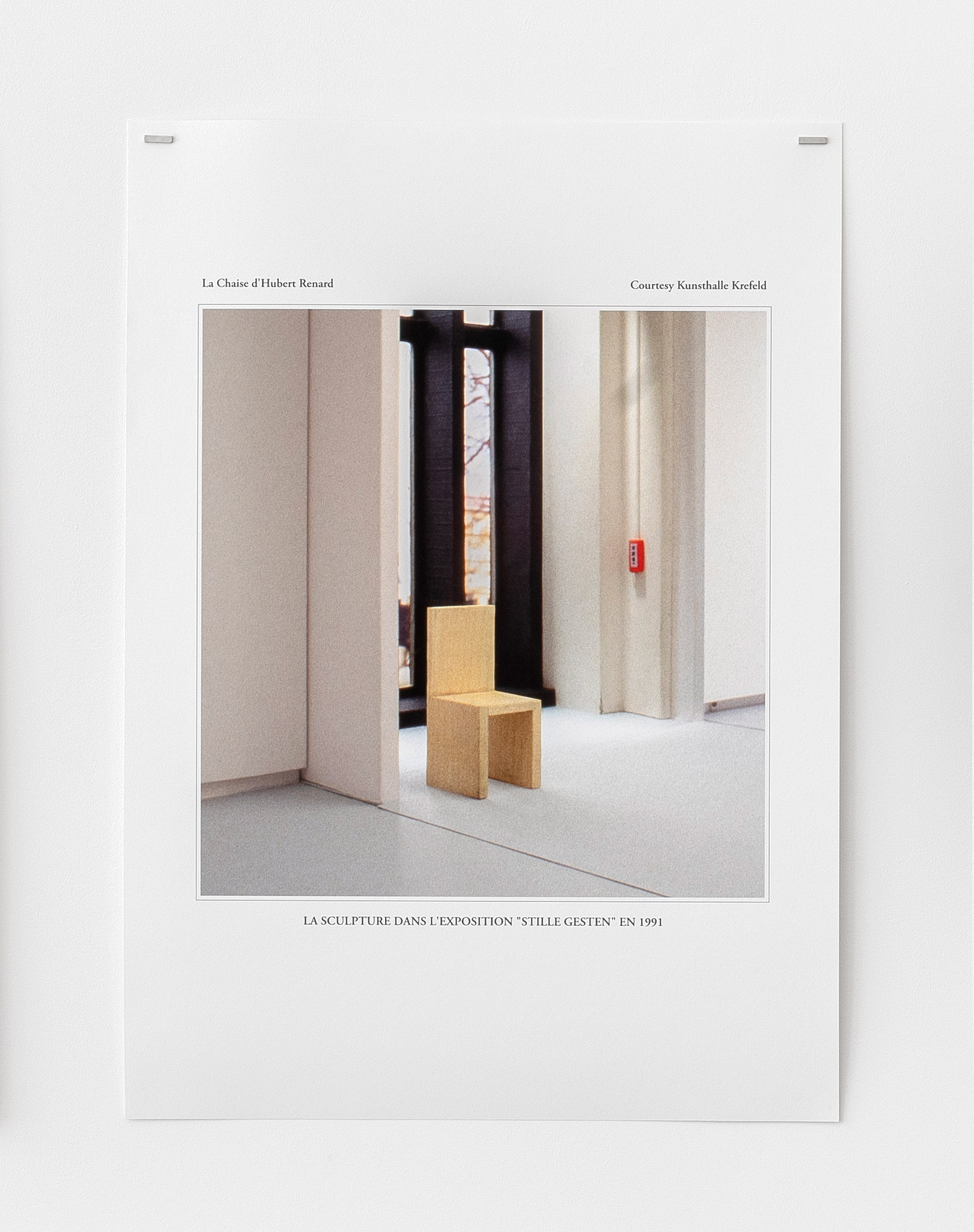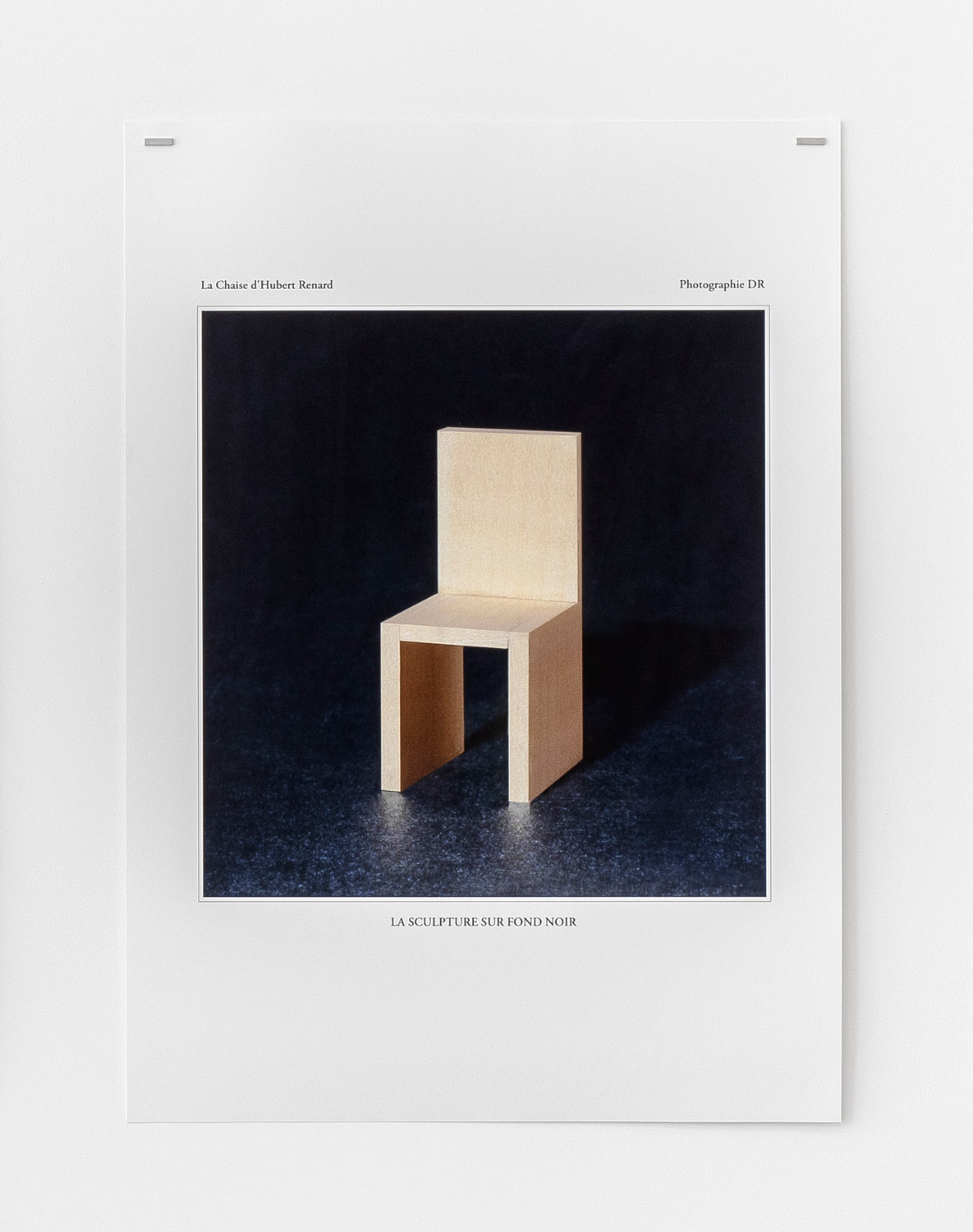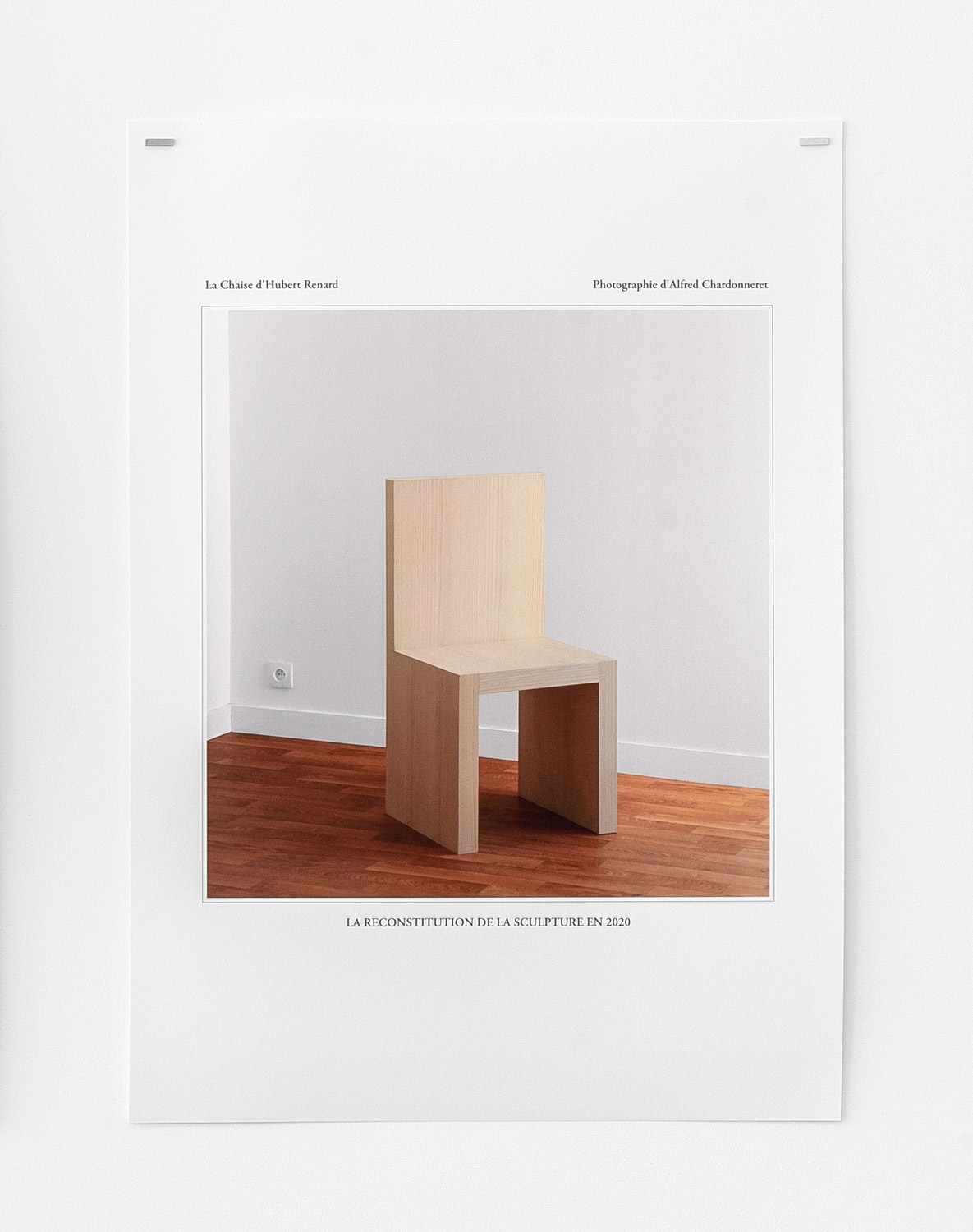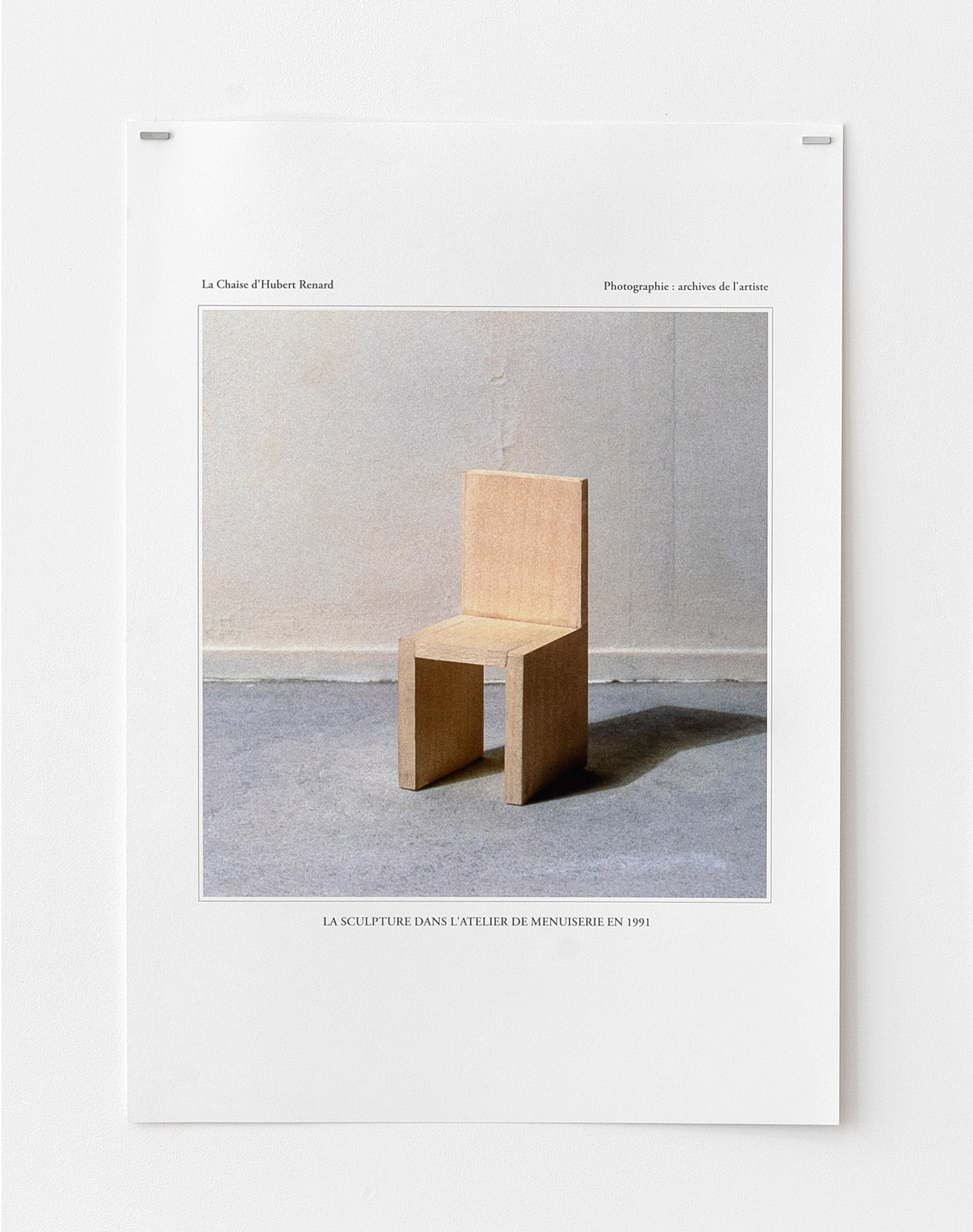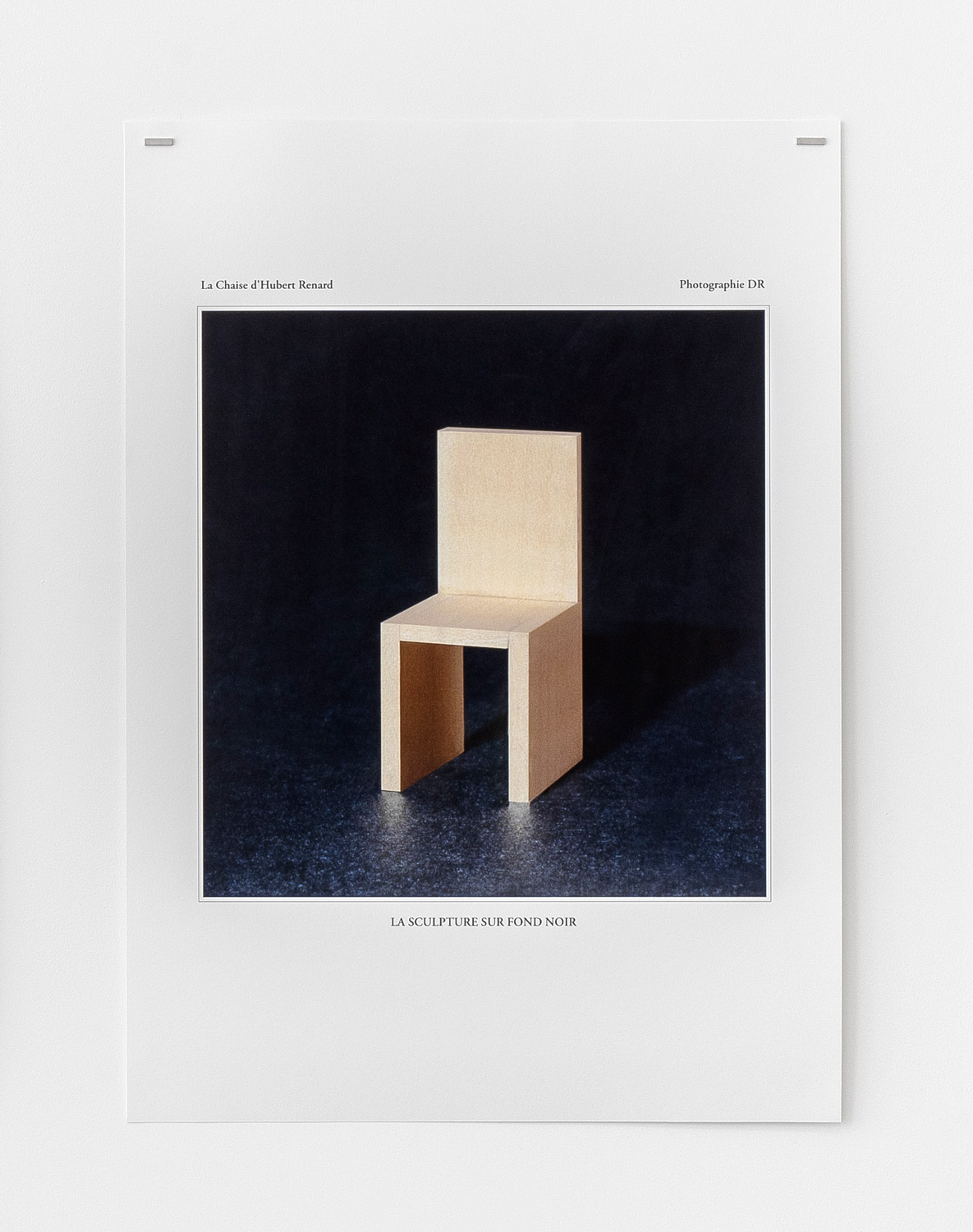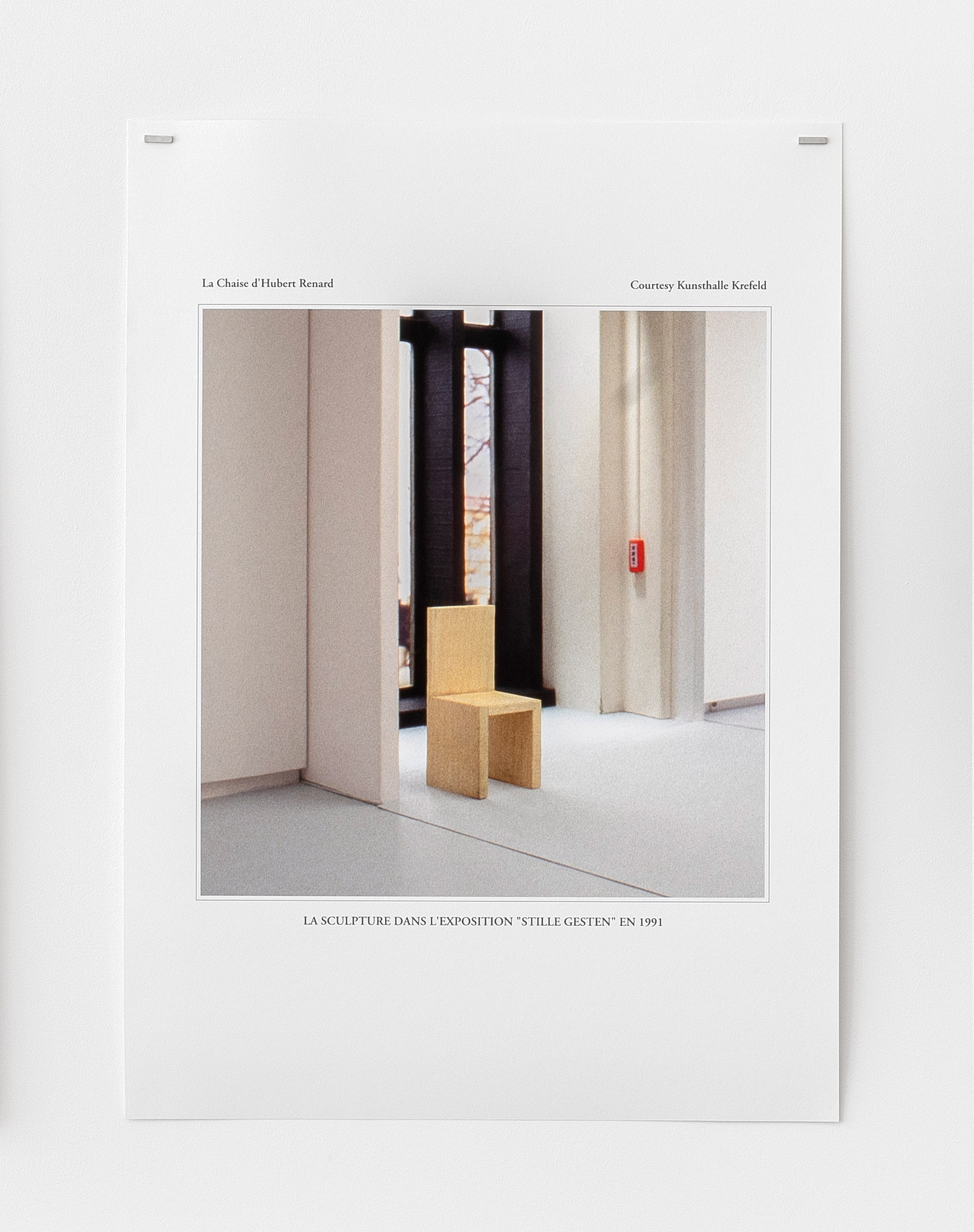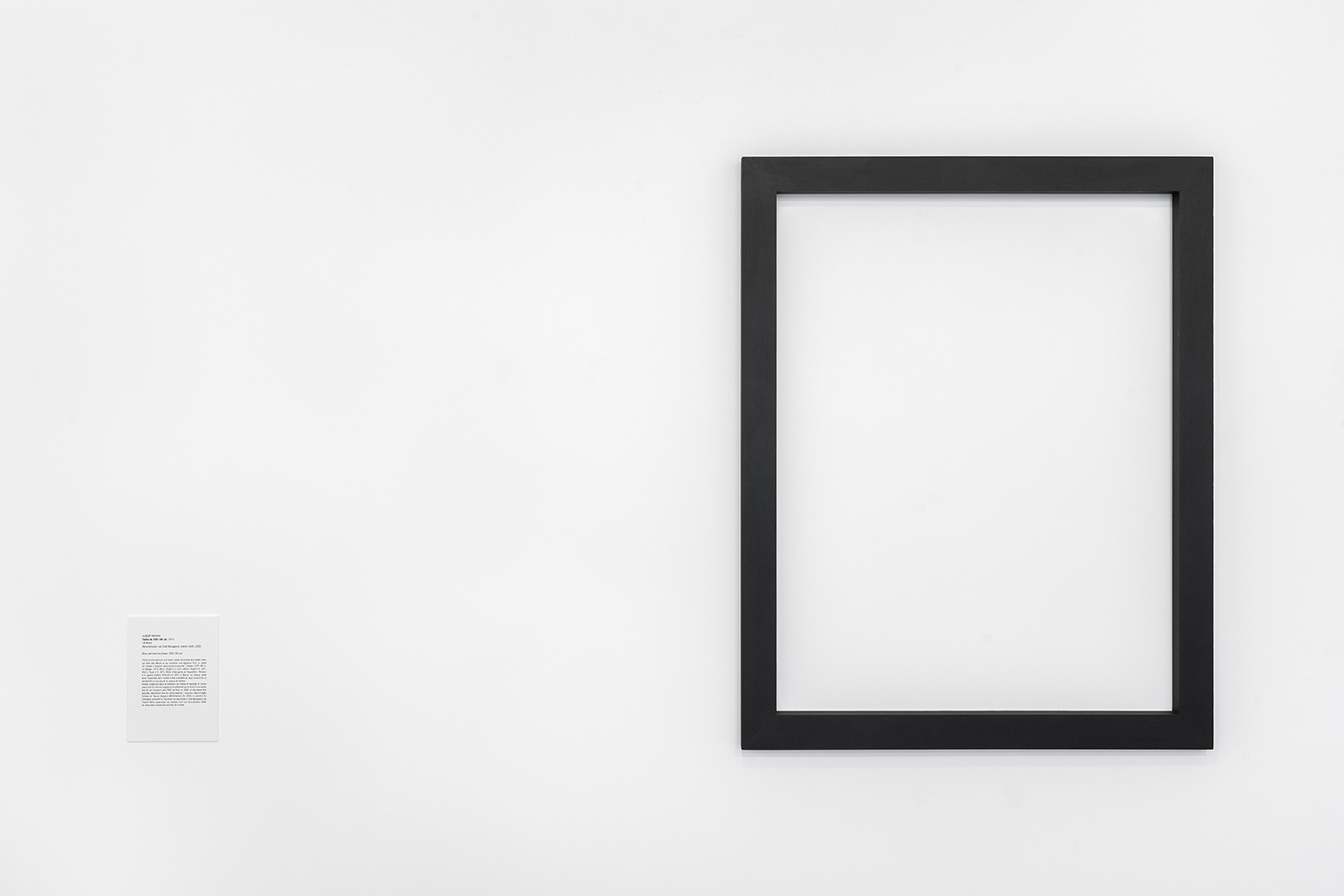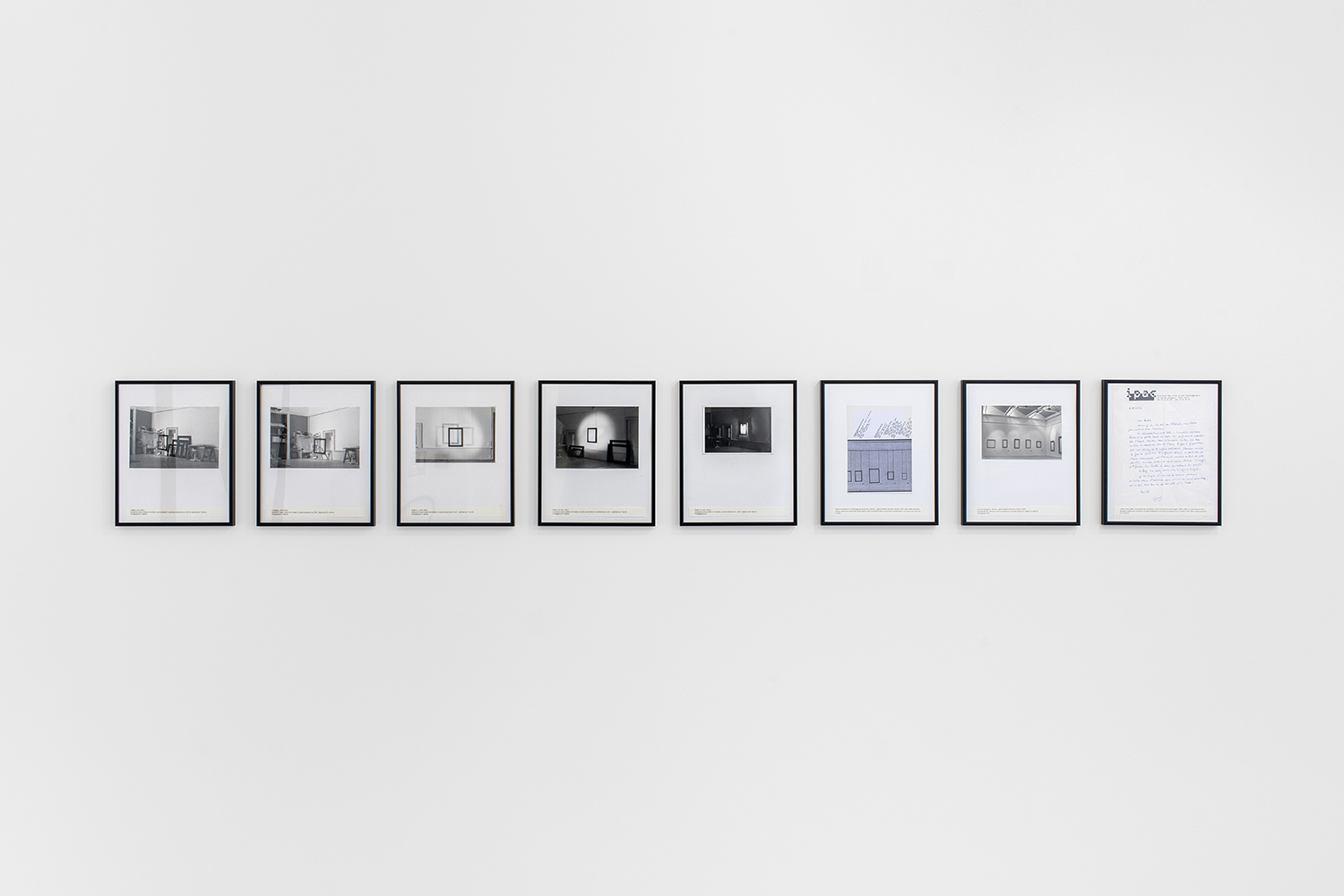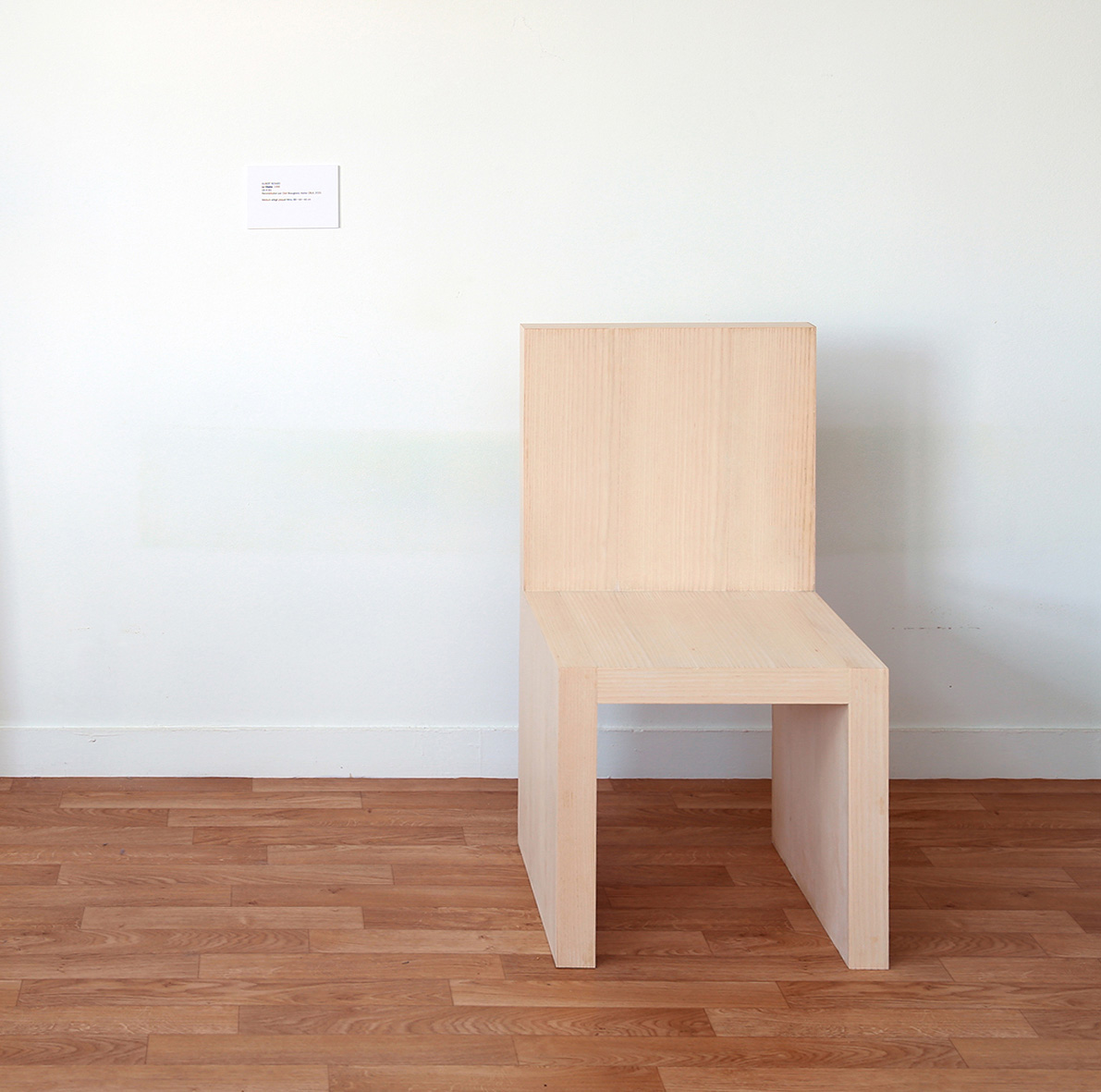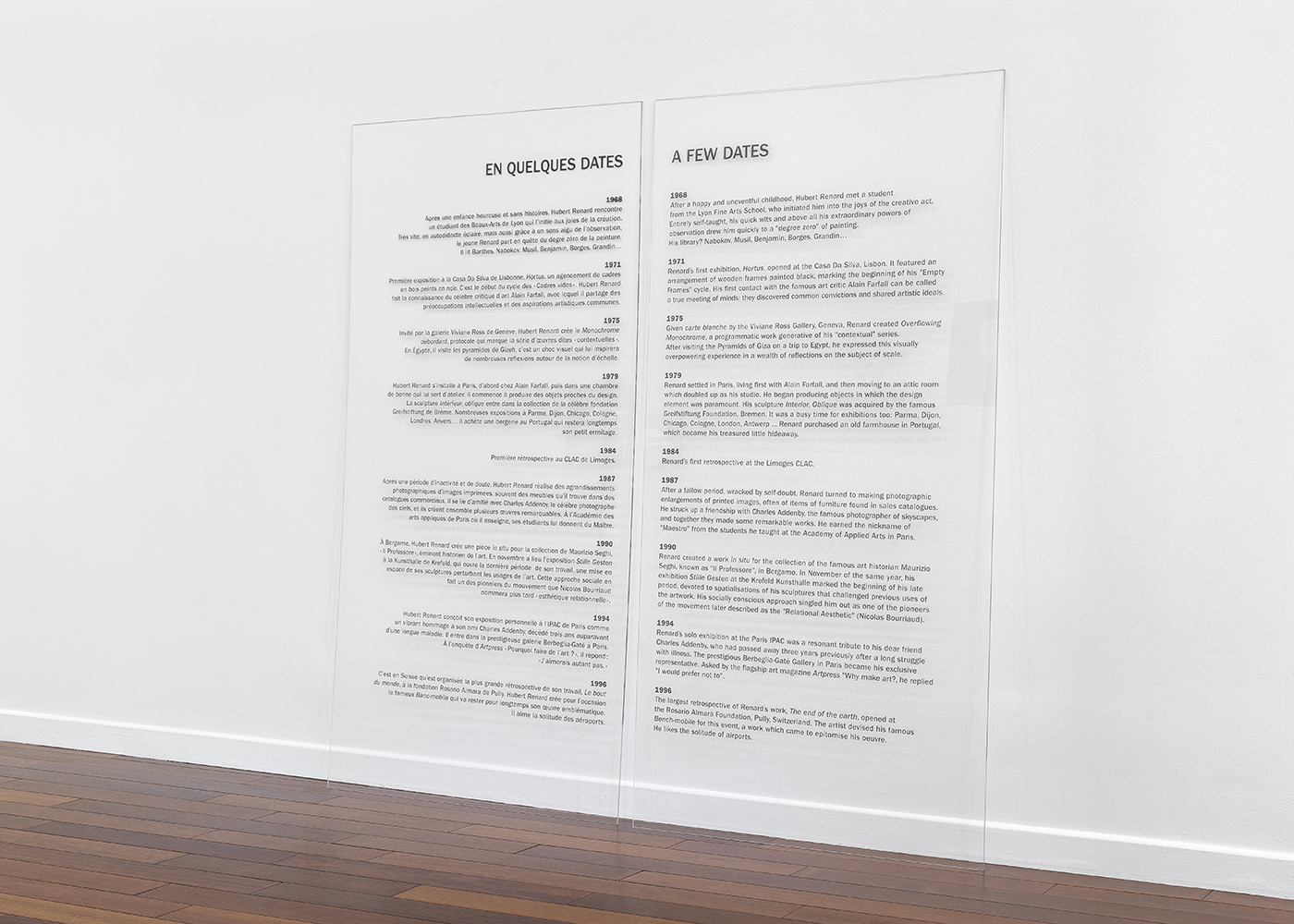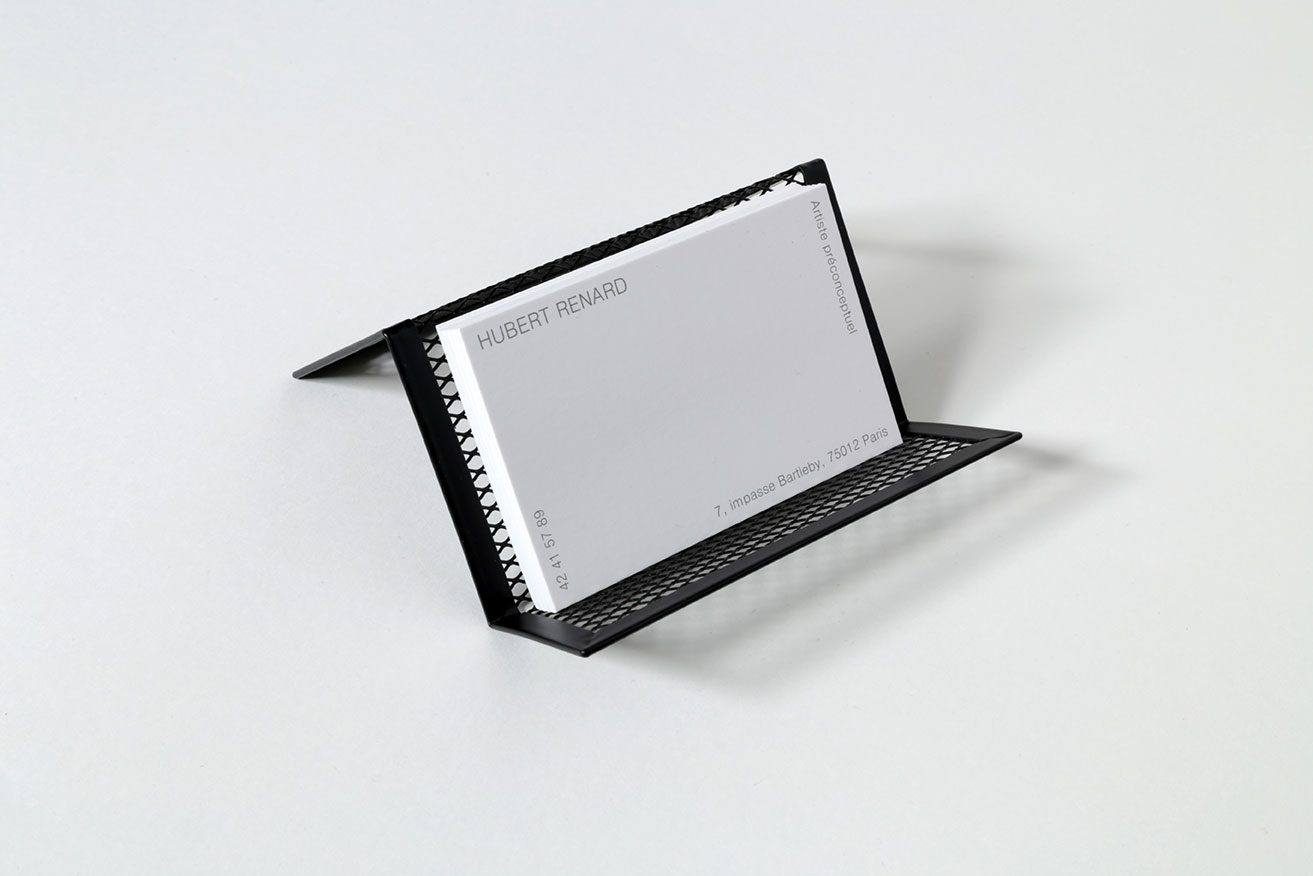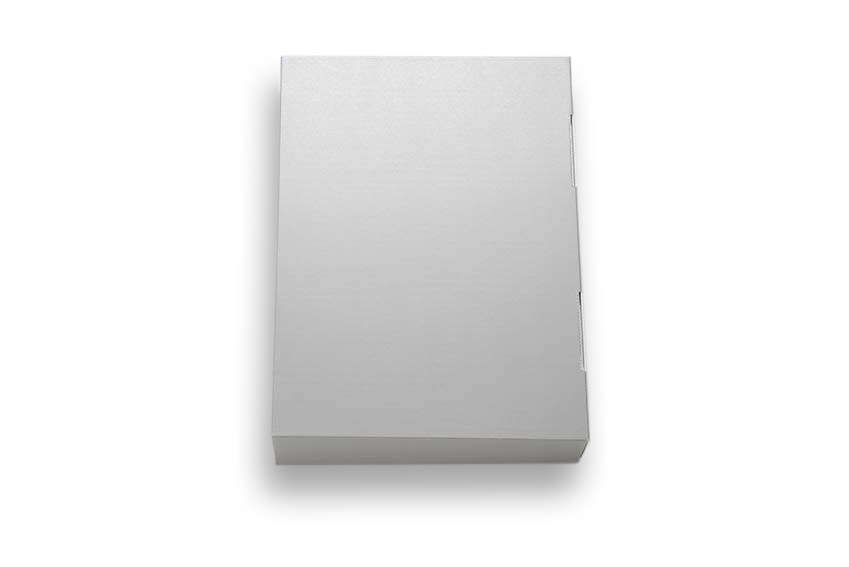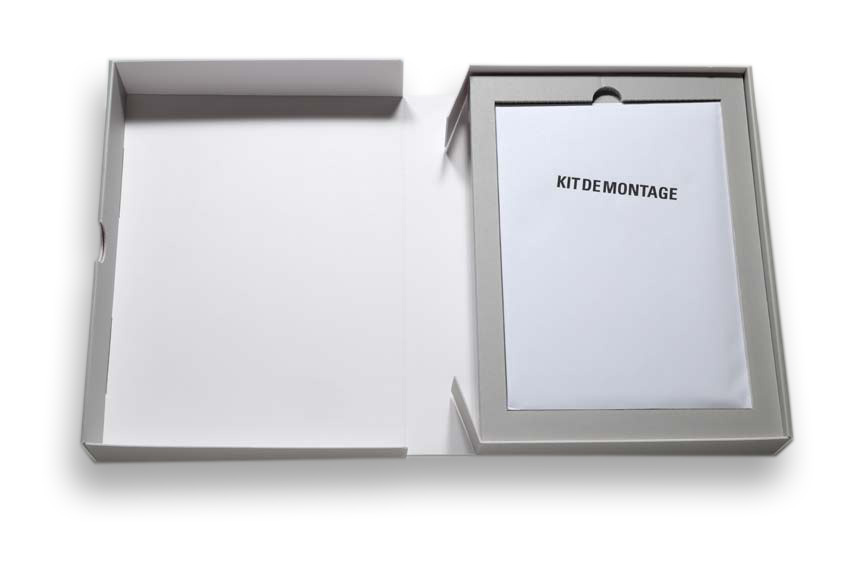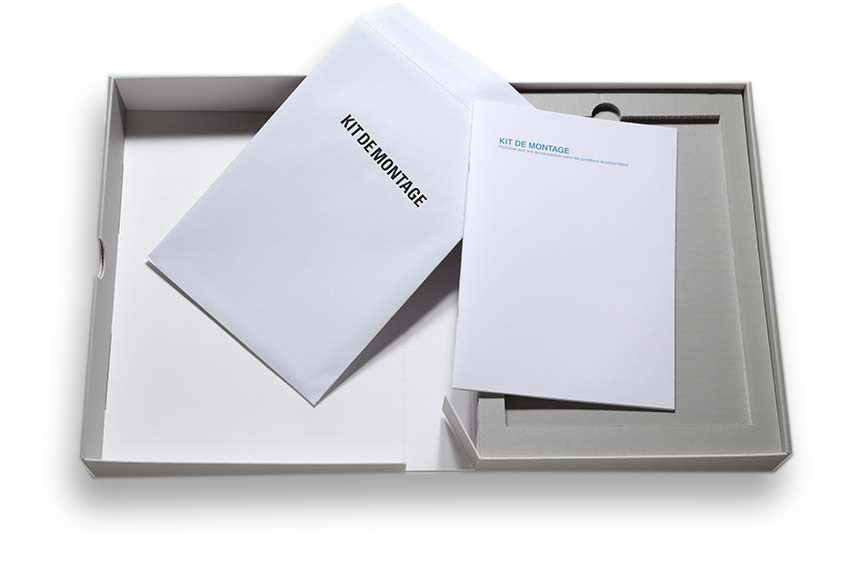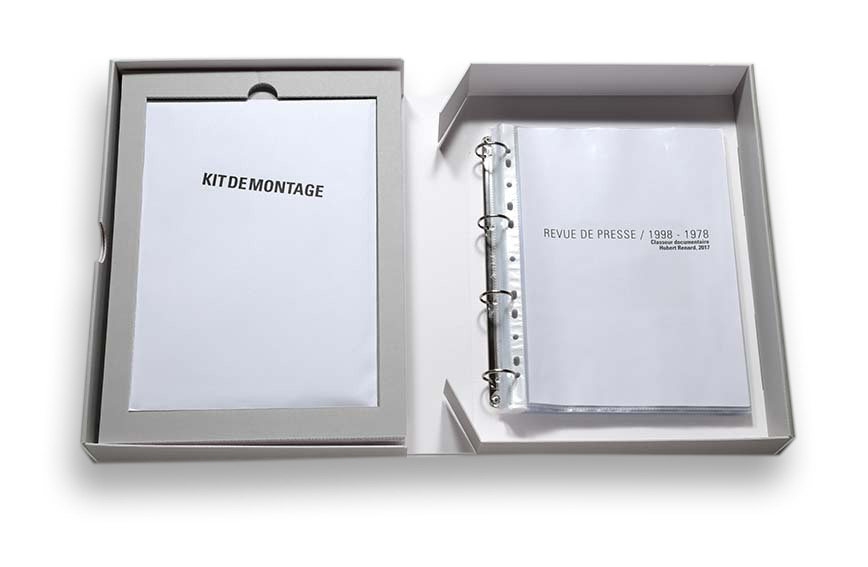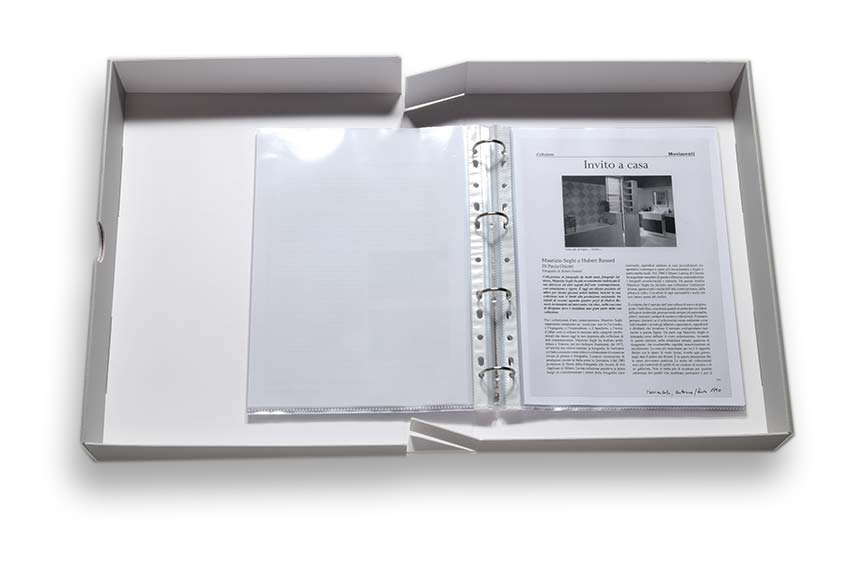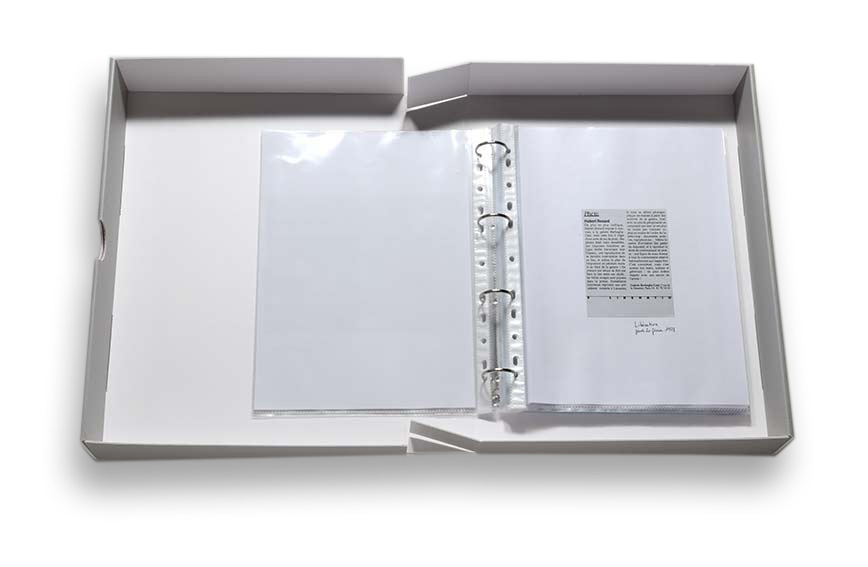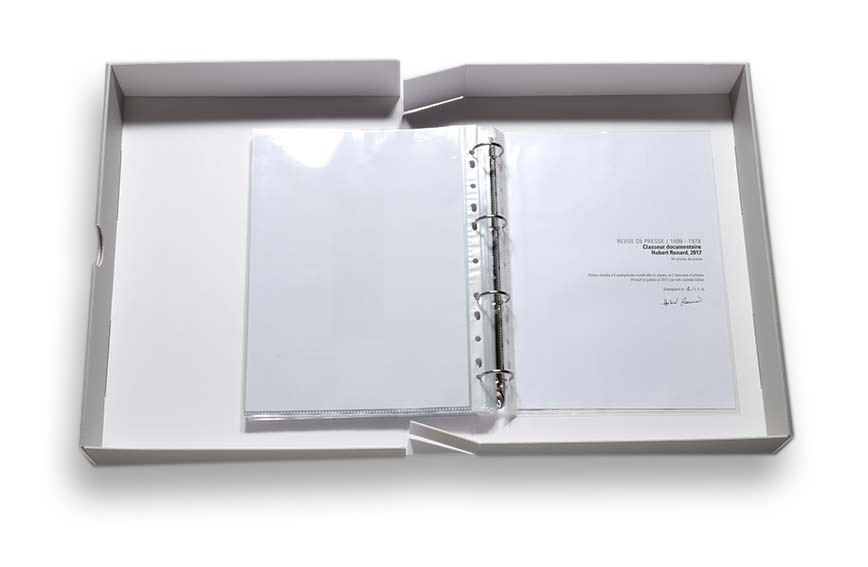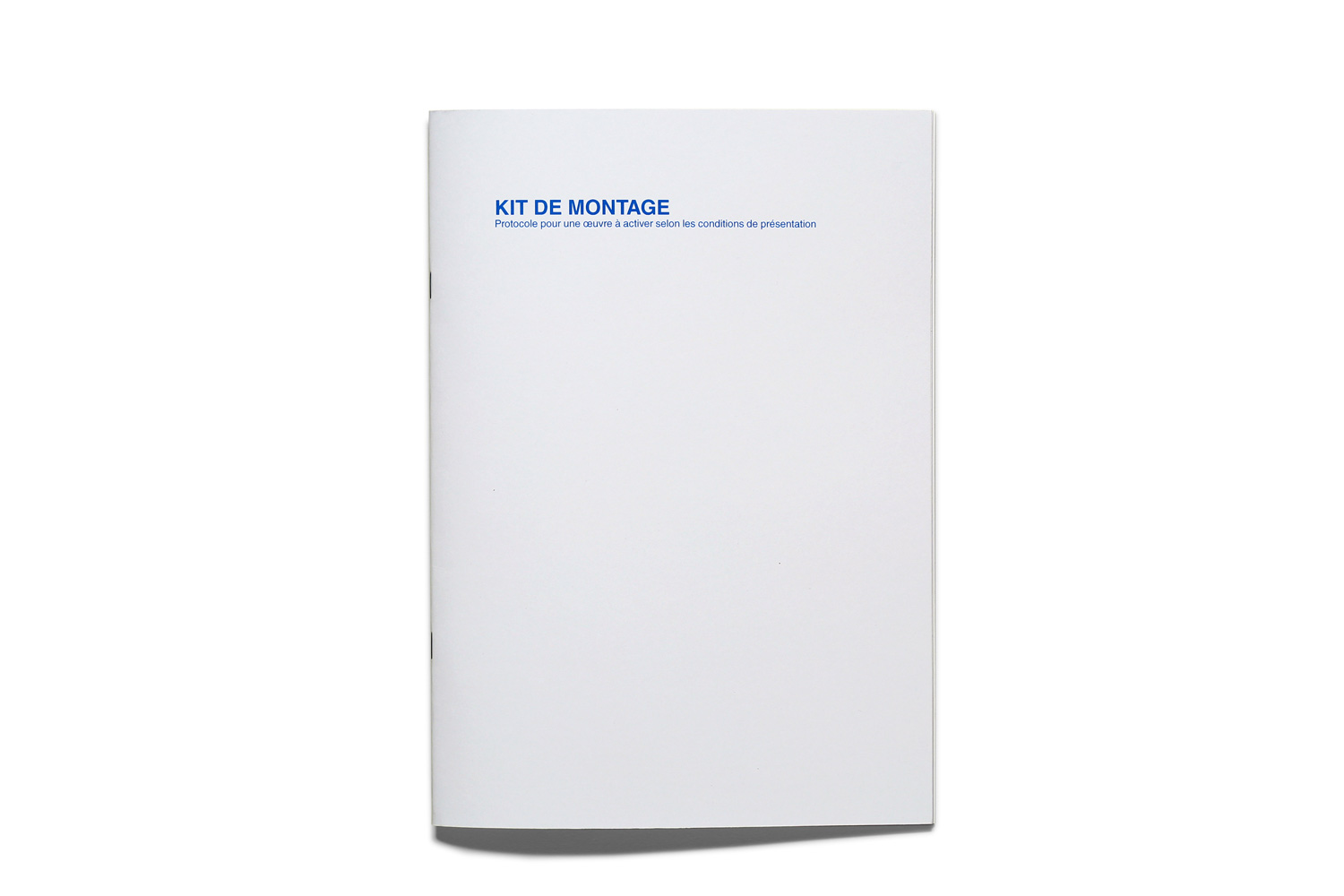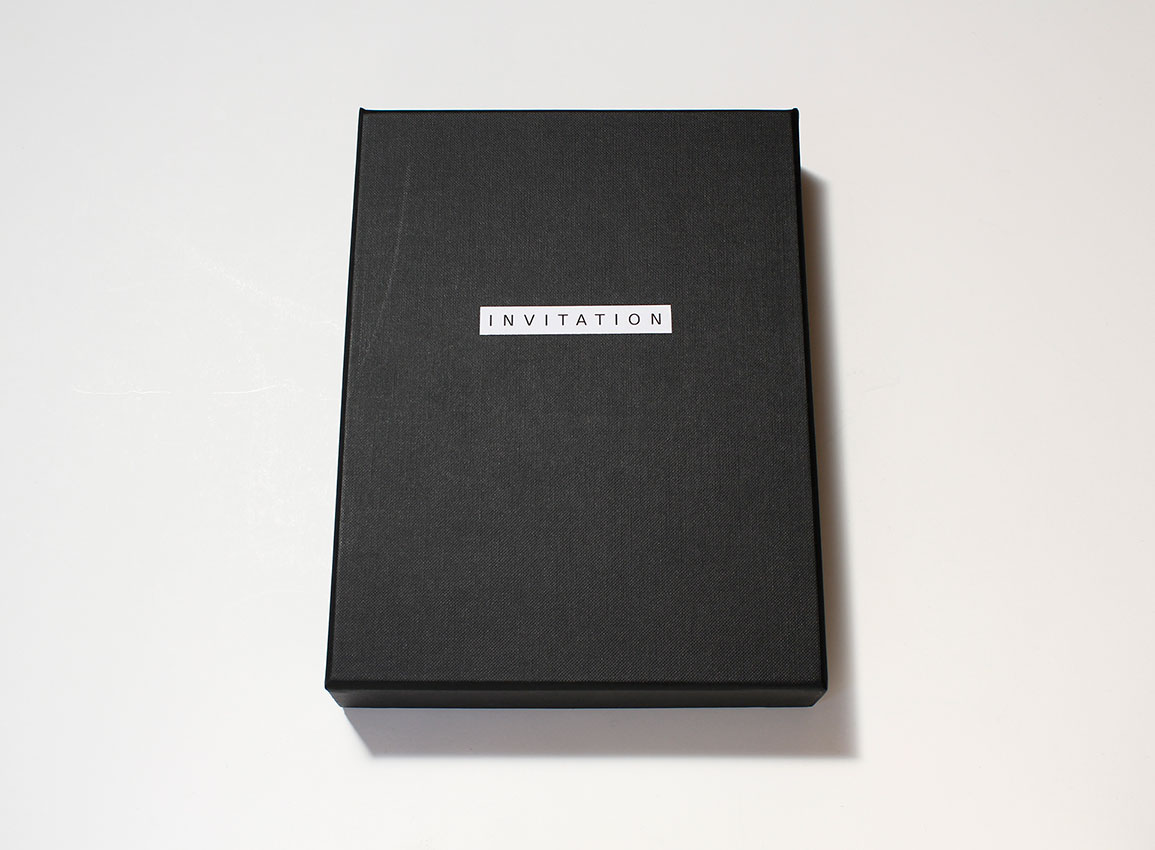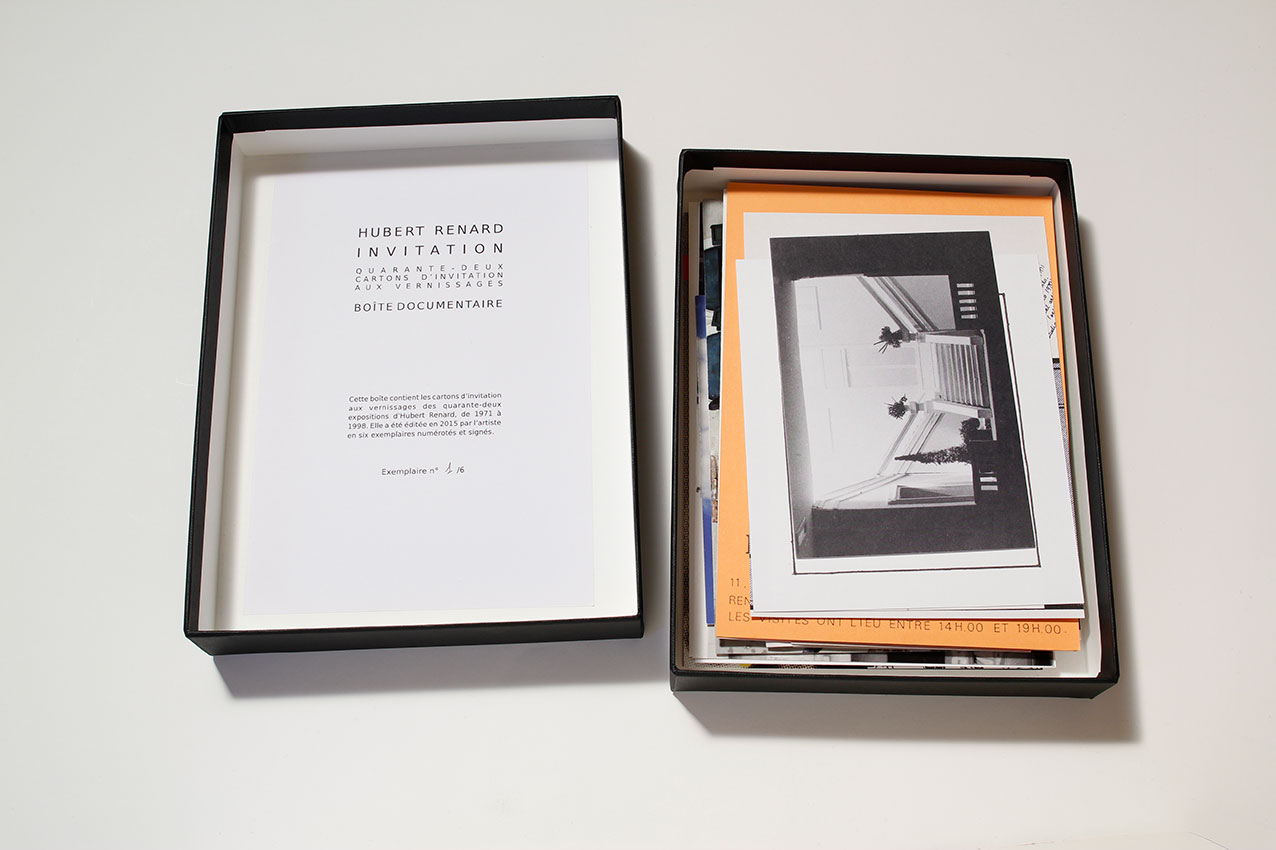Hubert Renard Inventaire général des croisements, 2025
Specifications
Binder containing 75 A4 pages
Binder size: 35 x 30 x 6 cm
Case size: 36 x 30.4 x 6.8 cm
Production
8 numbered and signed copies + 1 A.P.
Produced and published by mfc-michèle didier 2025
©2025 Hubert Renard et mfc-michèle didier
NB: All rights reserved. No part of this edition may be reproduced in any form or by any means without written permission from the author and the publisher.
For many years, my work has endeavoured to bring into existence the work of an artist who bears my name and who lived and worked at the end of the twentieth century, around ten years before me, by patiently and methodically building up his archives. Exhibition photographs, invitations cards, press articles, exhibition books and catalogues - all the elements that attest to the existence of an artistic work, apart from the art object itself, have been produced, published thanks those components. Until the publication by mfc-michèle didier of the catalogue raisonné of this work, a scientific and exhaustive work that inventories and authenticates the artist's complete oeuvre. These archives describe a career that followed the fashions and the spirit of his time, making Hubert Renard an average artist: he may not have been a major figure in art, but he was always ‘up to date'.
This work existed in the real world only as a reduced model, to be photographed, before physically disappearing, obliterating all material objects in favour of documents, archives, testimonies and stories. It therefore takes the form of documentary exhibitions, publications and conferences: there are no art objects, only reproductions, commentaries and ekphrasis. Hubert Renard stopped producing a few years ago, either because he withdrew from the art world or because he died, nobody knows. Nevertheless, I continue to use his archives in various proposals, which allows me to play again and to shake up the questions linked to the ontology of art, its modes of display, production, distribution, signature, recording, discourse, conservation, disappearance...
The ‘Crossing Archives' project involves building bridges and imagining links between two archives of different kinds: my own, which document the career of the fictional artist Hubert Renard, and perfectly identified and official historical archives. Identify the documents in one that give information about the other and vice versa. Crossing reality and fiction. I intend to carry out this research using institutional or private archives: museums, galleries, collectors, cultural institutions, documentary collections kept here and there.
We'll have to look for the grey areas, the fields of uncertainty, the absences that all archives conceal. I'm always surprised by how quickly memories deteriorate. Events that are sometimes recent conceal a number of uncertainties or omissions. It only takes a few years for recordings to become unidentifiable or for images to lose their references. And so, we very quickly find gaps, photographs with subjects that are not completely identified, for example an image showing three figures on the terrace of a house with the caption: ‘Constantin Brancusi, Marcel Duchamp, Mary Reynolds, and an unidentified woman in Villefranche, France, 1931"[1].
I can't help dreaming up an identity for this unknown person among known people, in known places and at a known time. I want to give this ghost a real life, a biographical account, a recognisable existence. At the same time, it is also a desire to complete an incomplete history, to fill in gaps, to clarify approximations, and we know the dangers of such an approach. There is a fine line between correcting archives and manipulating them, between discovering new evidence and rewriting history. The aim will be to examine this boundary and determine whether or not it is porous.
I plan to look at unidentified figures in photographs, people mentioned in documents but completely unknown, places, objects or events mentioned but without any reference enabling them to be found or located. As my archives are fictive, they can still be modified, revised and adjusted (although many edited elements become permanent and fixed): it will then be easy for me to recognise these unknowns as people who played a role in Hubert Renard's artistic or biographical career, locate a place as one that Hubert Renard occasionally or regularly visited, or remember that the famous artist took part in an event cited without any precise reference in the official archives.
This work has to be a back-and-forth process, a real exchange, and I therefore need to obtain permission from the external archives to record additional information that will shed light on areas that have remained obscure, and clarify incomplete or poorly referenced documents. For my part, I will be recording these items, which complete the story of Hubert Renard, mainly through photography, but also through any suitable documentary trace, since the original documents will obviously remain in their original archives.
So it's a job of documentary research, which will mainly involve taking photographs of archive items, photographs of photographs in their storage boxes, of articles in their filing cabinets, of documents in their filing pockets. These images, together with their captions, could take the form of an exhibition or a publication, depending on the extent of the collection and the possibilities that arise. Once the experiment has been carried out in various archives, I also plan to bring together all these cross-references in an exhibition or a book.
The choice of one archive rather than another will be dictated by the desire to work with a historic and prestigious institution that has a more or less strong link with the work of Hubert Renard. To use his undeniable reality, but also his notoriety, to validate my story. Each time, I will have to consider the accessibility of his archives, the limits imposed on me by the documentalists, and plan a protocol establishing the rules of my intervention. This cross-referencing of archives is obviously research that revolves around the legitimisation of artistic work. The authority of the historical archives in identifying the biographical elements of Hubert Renard will give his story a real guarantee. Just as the introduction of items from these famous archives into the artist's own archives acts as a realistic touchstone, making them more truthful, since all fiction needs very real anchor points to give credibility to the story, to give it the weight of reality. While it may be objected that the introduction of a tiny bit of fiction into a truthful archive risks discrediting the scientific and rational enterprise of recording its history, I would retort that, on the one hand, the fiction identified does not detract from the objectivity of the recording. On the other hand, this work will make it possible to reduce some of the shortcomings in referencing the archives, thereby making them more complete and more reliable. You always have to negotiate with reality.
[1] Archives of the Philadelphia Museum of Art, on the Duchamp Research Portal, www.duchamparchives.org
7.48 x 5.51 in ( 19 x 14 cm )
11.81 x 8.66 x 1.57 in ( 30,5 x 22,3 x 4,1 cm )
11.81 x 9.45 in ( 30 x 24 cm )
27.56 x 19.69 in ( 70 x 50 cm )
27.56 x 19.69 in ( 70 x 50 cm )
27.56 x 19.69 in ( 70 x 50 cm )
8.66 x 6.3 in ( 22,5 x 16,5 cm )
11.81 x 8.66 in ( 30 x 22 cm )
11.81 x 8.66 in ( 30 x 22 cm )
27.56 x 19.69 in ( 70 x 50 cm )
27.56 x 19.69 in ( 70 x 50 cm )
27.56 x 19.69 in ( 70 x 50 cm )
27.56 x 19.69 in ( 70 x 50 cm )
Each 27.56 x 19.69 in
Variable dimensions
Each 55.12 x 27.56 in
1.97 x 3.94 x 3.94 in ( 5 x 10,5 x 10,5 cm )
Edition of 6
15.35 x 11.42 x 2.36 in ( 39 x 29 x 6,5 cm )
1.18 x 7.09 x 9.45 in ( 3,5 x 18 x 24 cm )

